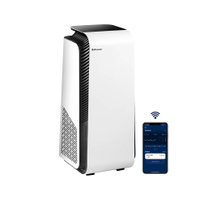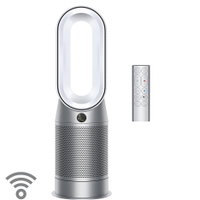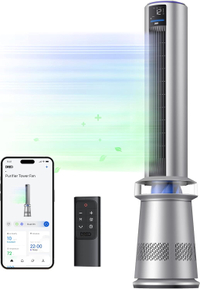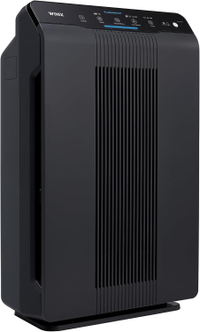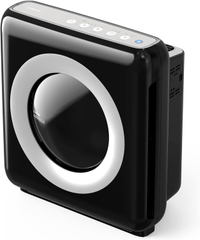We spent over 800 hours testing the best air purifiers — here are our top 5
Here are our editor-approved air purifiers to suit every home, need and lifestyle.
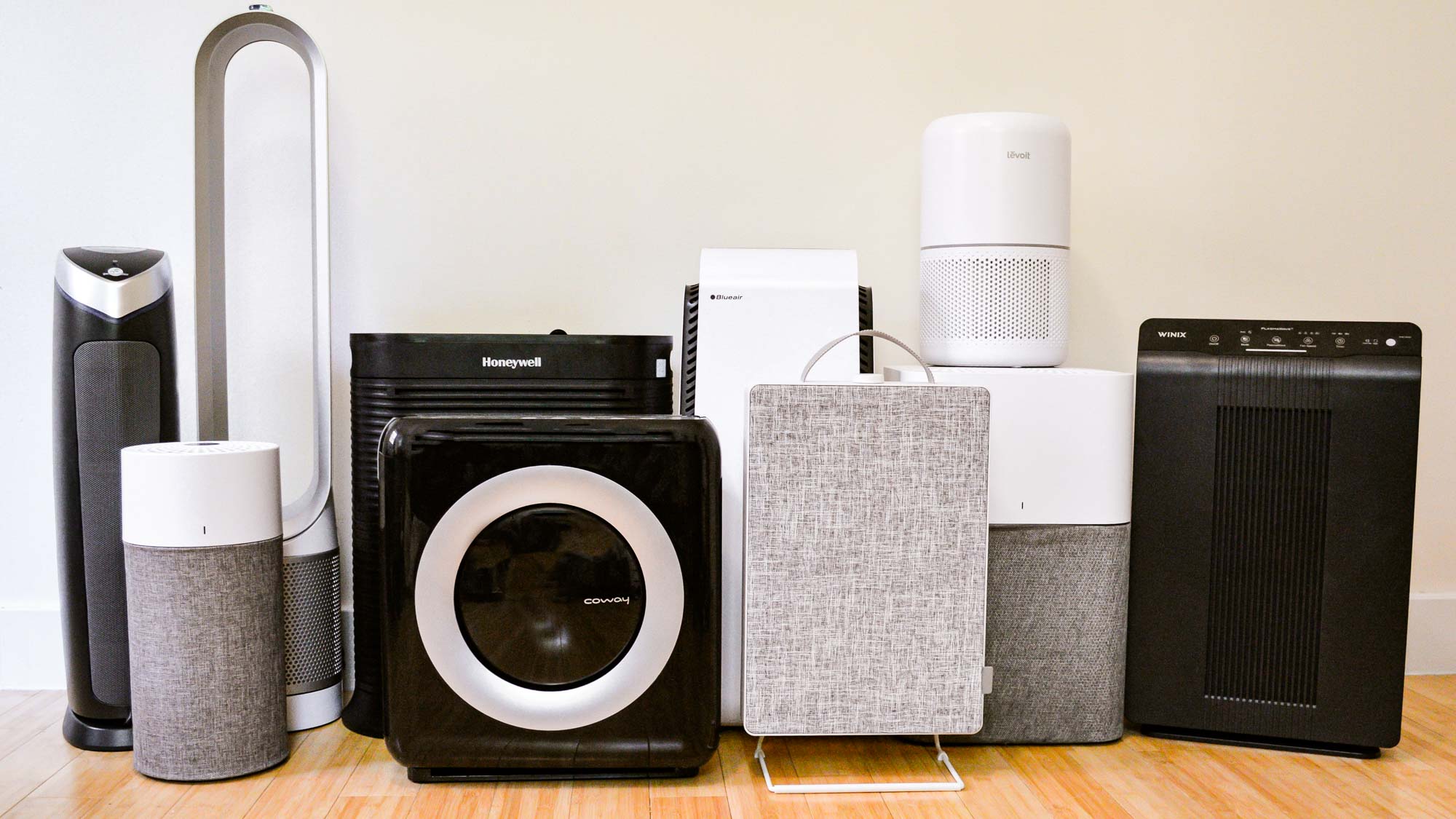
Take it from me, an air purifier can completely transform your wellbeing at home. Whether you’re an allergy sufferer, you live in an area of high pollution, or you simply want cleaner, fresher air in your home, one of the best air purifiers can make all the difference.
I’ve suffered with allergies my entire life, and I just couldn’t put an end to my daily congestion. Relying on over-the-counter medication was equal parts frustrating and expensive, and I knew that I needed a better solution. I was initially skeptical about how much an air purifier could really help. However, four years later and, my dear reader, you can officially consider me a convert.
When I initially brought my air purifier home, I started out by turning on its ‘Sleep Mode’ an hour before I went to bed. I was surprised that it only took a matter of days for my morning sniffles and sneezing fits to begin to improve. After just a week, I could actually breathe easily in my own home.
I’ll never underestimate how much of an impact an air purifier can have on health and wellbeing again, but it’s important to note that not all air purifiers are created equal.
Luckily, we’ve spent hundreds of hours testing air purifiers in both house and laboratory settings to find the best option for your home.
If seasonal allergies, dust or pollution are your main concerns, you’ll want an air purifier that focuses on fast filtration. If you’re looking to cover a large amount of space, then you’ll need to ensure that you’ve selected a product that’s designed to do so (air purifiers will have suggested room sizes, so make sure to check this before making your purchase!).
Find out which of our 5 best air purifiers made the cut.
My top picks
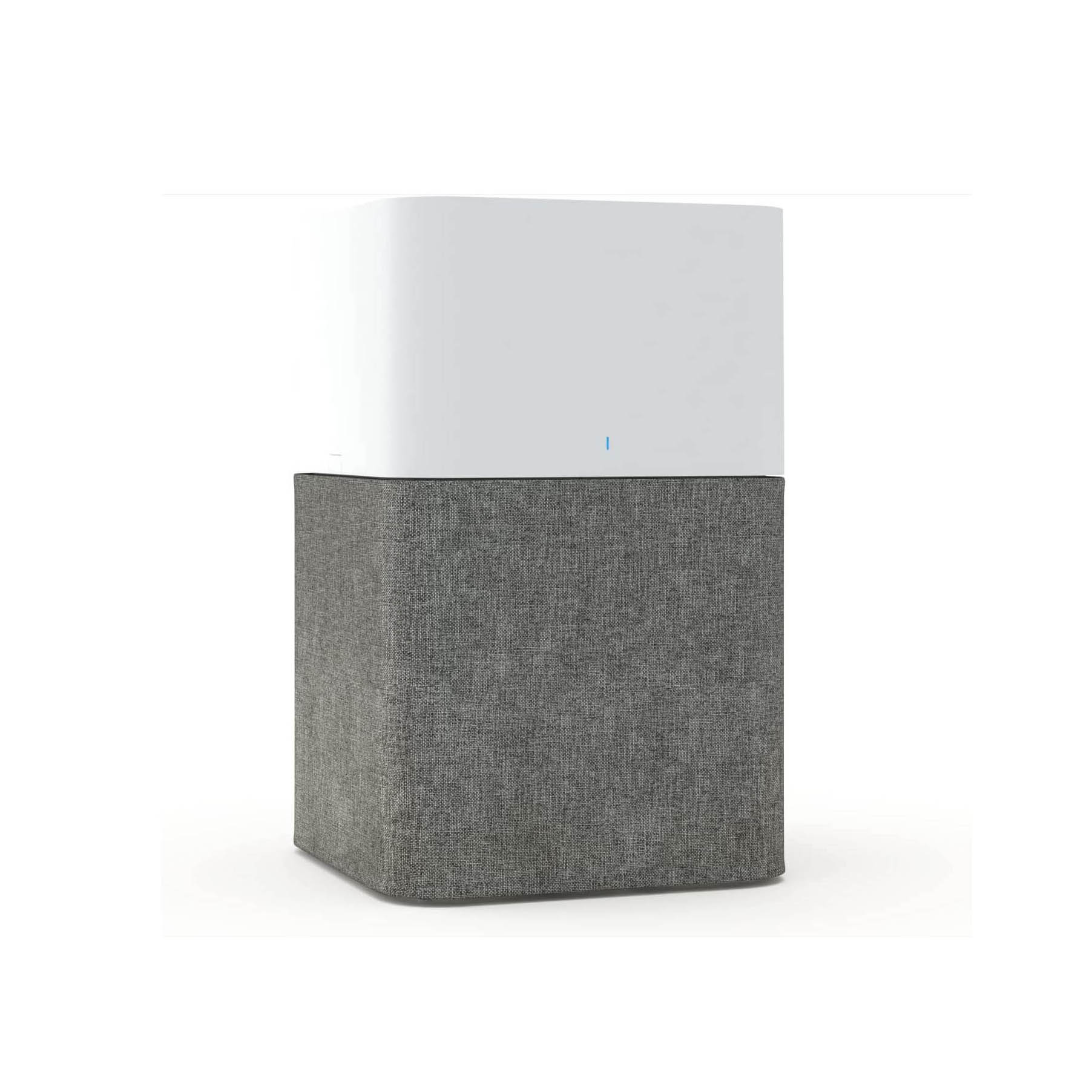
The best air purifier overall in our tests, we recommend this model above all others because it gets the job done quickly and efficiently, saves energy and works well in large spaces.

If you're on a budget or don't wish to splurge, this Clorox air purifier is great value for money. Ideal for rooms up to 320 sq ft, it’s simple to set up and efficiently cleans the air.
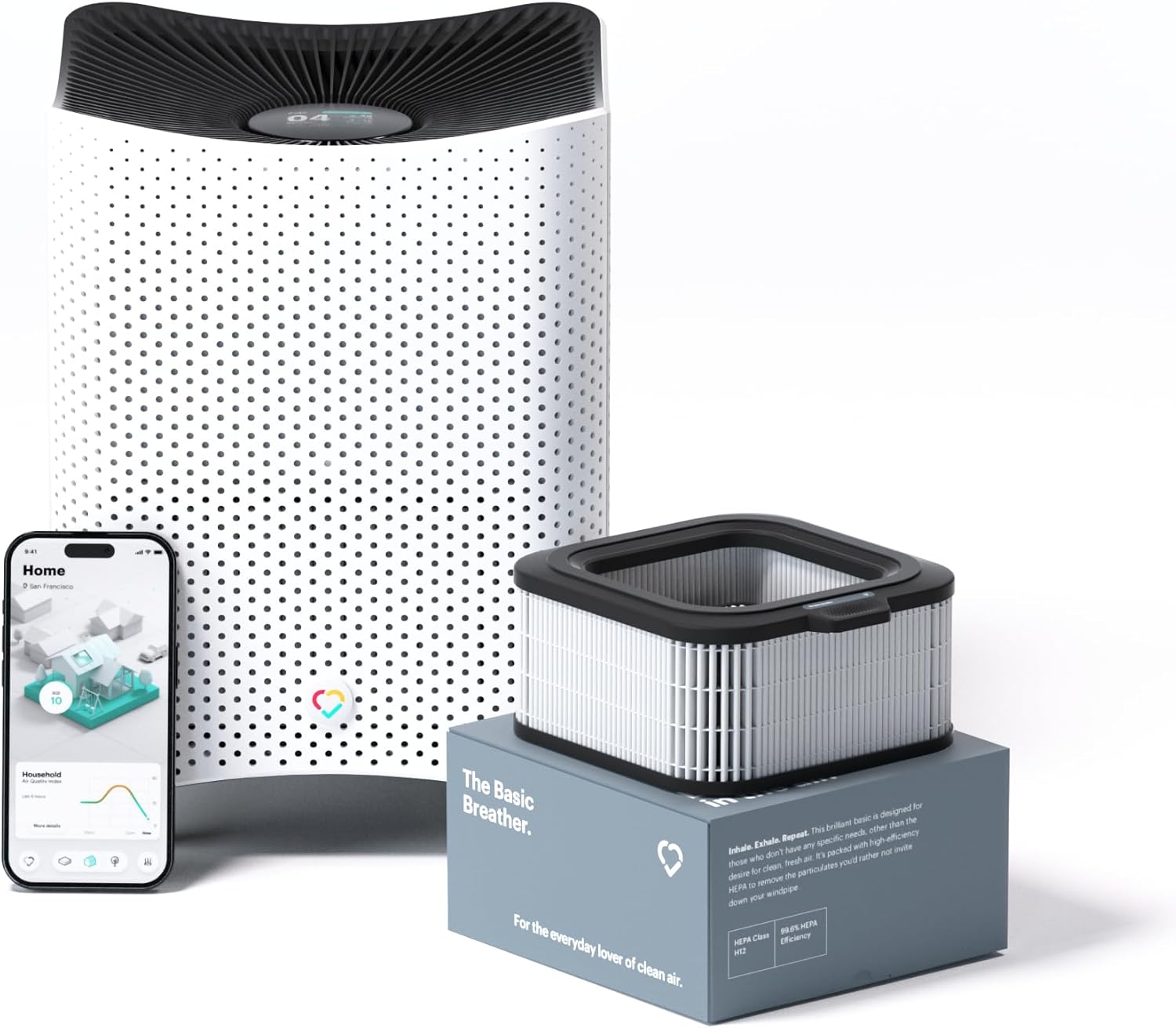
The best air purifier for anyone with allergies. This has fast filtration, and you can choose from seven different types of filter. It also comes with a a great, user-friendly App.
How to choose the best air purifier
Before buying an air purifier, there are several things to first consider. To help you decide on the best air purifier for your home and needs, we break down the key factors:
What do you need your air purifier to do?
To find the best air purifier for your needs, we need to know what you need your air purifier to do and where you plan to use it.
Always check the CADR: Do you suffer from seasonal allergies? Are you a pet parent or have children? Or do you want to simply remove cooking smells, smoke or other odors?
Check the CADR (clean air delivery rating) to determine which model is best for you. Essentially, the CADR measures how quickly an air purifier can filter the air in a given space, based on scores for smoke, pollen and dust.
If your No1 priority is beating allergies or if you live in an area with high pollen count, we'd recommend looking for air cleaners with a high pollen CADR. However, if it's just general dust, then a standard rating will be sufficient. Some, such as the Mila Air Purifier, comes with seven, interchangeable filters to suit specific "breathing" needs such as the "Big Sneeze" and "The Basic Breather".
Check the size of the room it's going to purify: Knowing what size air purifier you need for your room can often be confusing. Do you want to mainly filter a large living room or kitchen/dining space, or do you need it for a small nursery?
Matching your air purifier to your room square footage and type is essential for it to work at its best. A general rule of thumb is to choose an air purifier with a CADR that is at least two-thirds the size of the room. For kids bedrooms or small home offices, the Shark NeverChange Air Purifier is an eye-catching, neat countertop unit.
How easy is it to move?: Portability is another factor to consider, and air purifiers can be hefty appliances. From experience, you don't want to be doing the back-breaking task of carrying up and down stairs.
Decide whether you're going to leave it in one room, or move it from room-to-room frequently. If so, check the weight of your air purifier to make sure it's easily moveable and not too heavy. Some air purifiers come with caster wheels or a carry handle to make it more portable.
How noisy is it?: If you or family members value peace and quiet, you'll need to check out the air purifier noise levels (dBs). Noise levels range from nearly silent to steady humming, like an AC unit. If noise levels are a deal breaker, the Blueair Blue Pure 211+ Auto is a quieter device.
What extra features do you need?: Besides the basic functions, it's worth checking any advanced features you might need. Does it have handy filter indicator lights? How useful is it giving real-time information? Or does it have programs or LED lights?
If you need it for a child's room for instance, we'd suggest getting an air purifier with dimmable LED lights, so not to disturb their regular slumber. Personally, I would recommend a model with a remote control. I found it so handy to operate my air purifier from anywhere in the room, especially at night without having to get out of bed. Or if you prefer App control, we loved the Mila Air Purifier for it's super App and options.

As Homes Content Editor for Tom's Guide, Cynthia has made it her mission for us all to have cleaner homes (and air!) without the fuss. This comes after purchasing her air purifier four years ago, to combat insufferable hayfever and dust allergies. After just a week of using in her home, she was able to breathe easier again. Beyond that, she has a wealth of experience testing various appliances, and cleaning hacks. From finding the best air purifiers and vacuums to wet and dry mops, she probably has one of the most spotless homes around.
The best air purifiers you can buy today
Why you can trust Tom's Guide
Best overall
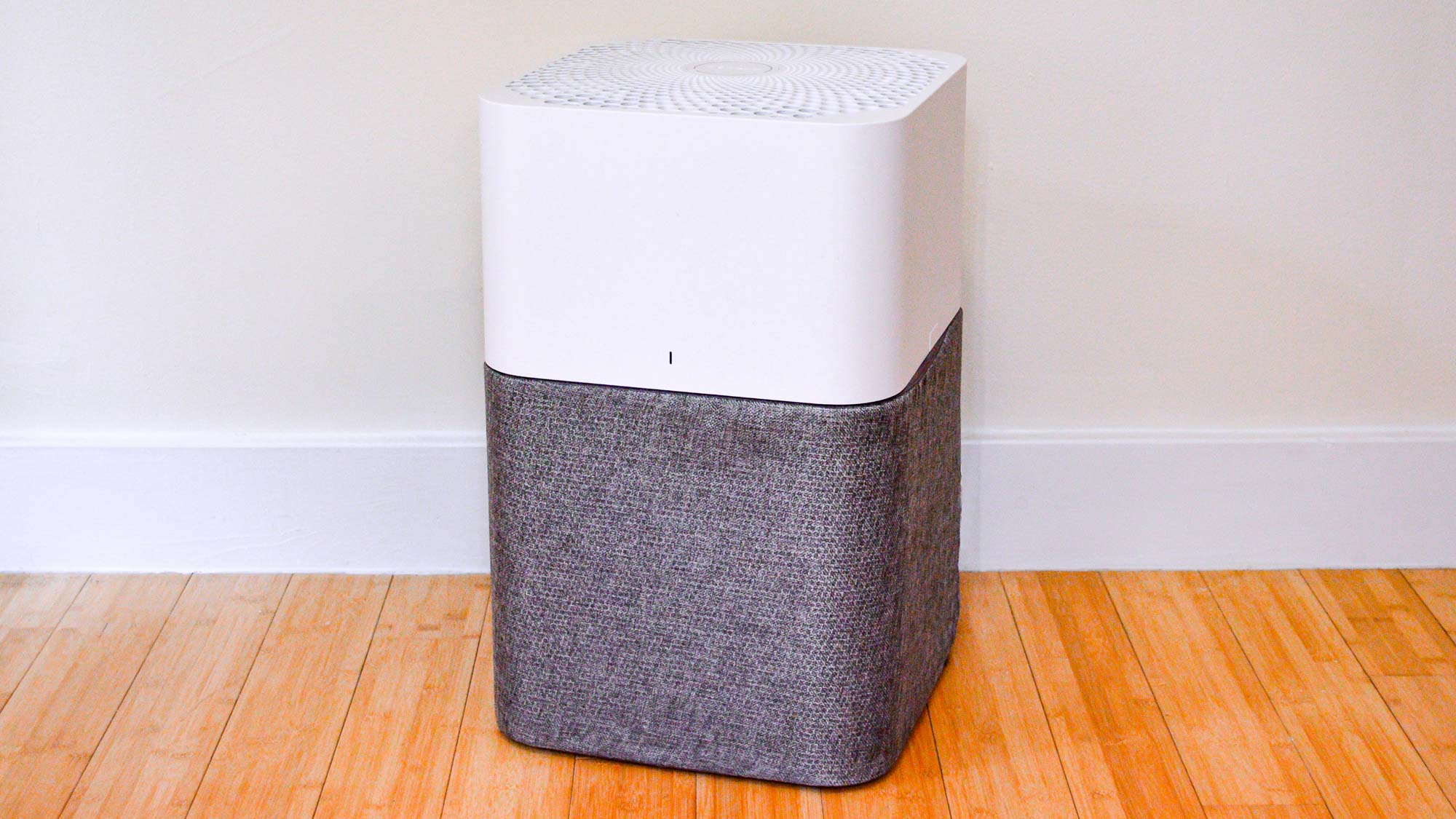
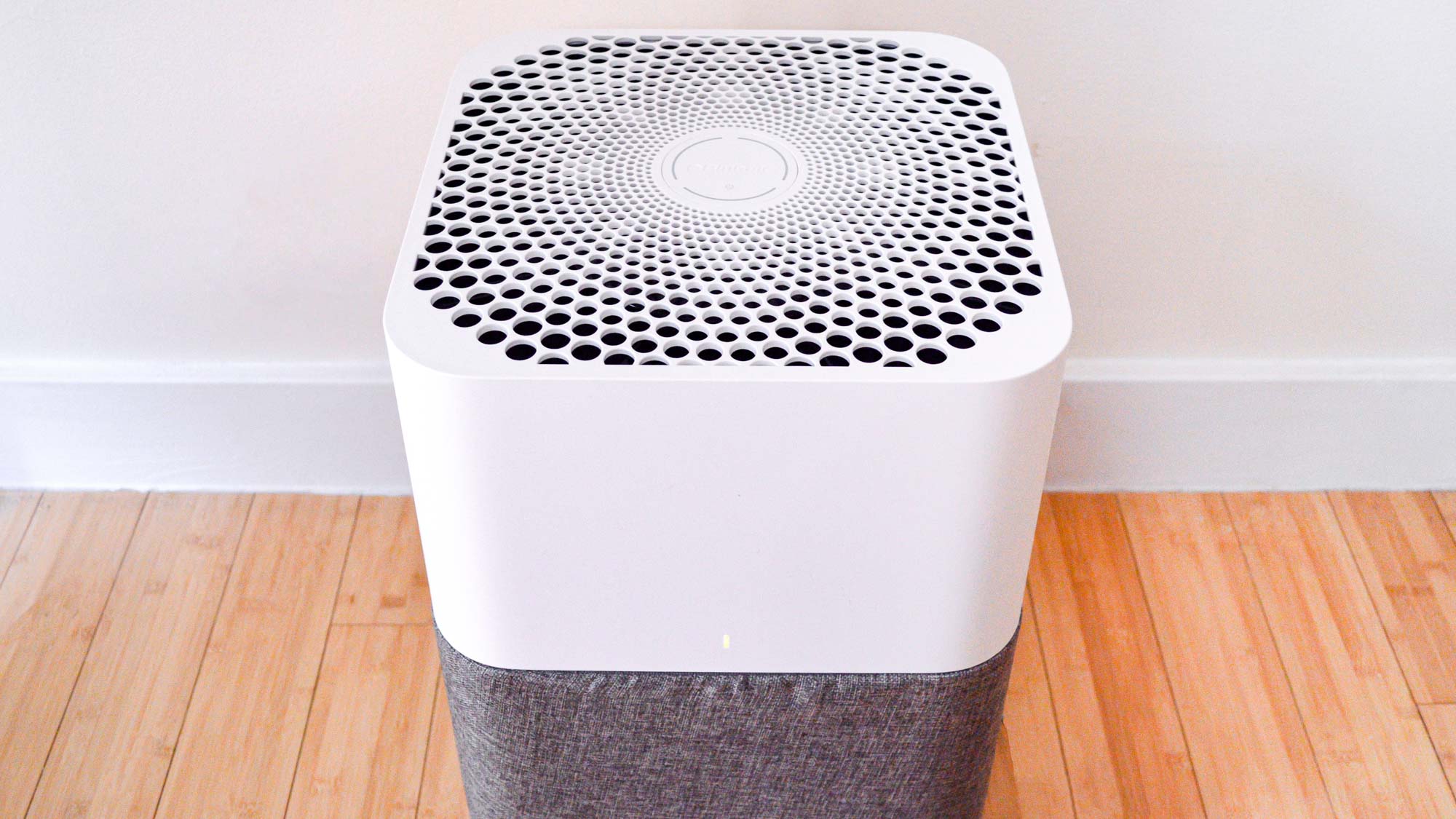
Specifications
Reasons to buy
Reasons to avoid
Attributes | Notes | Rating |
|---|---|---|
Price | At $300, this air purifier is mid-range in the market price. | ★★★☆☆ |
Design | Cube-like, modern style. Offers the basics, but lacks smart features | ★★★★☆ |
Performance | Top of the class | ★★★★★ |
Ease of use | Straightforward and user friendly | ★★★★★ |
What you need to know
The Blueair Blue Pure 211+ Auto stood out above the rest, proving to be a mighty air purifier. Out of all the models we tested, the Blueair Blue scored the highest CADR (clean air delivery rating) for getting rid of dust, pollen and smoke particles in bigger spaces. For that reason, I would recommend this for most households with large living rooms, bedrooms or spaces.
Design-wise, it's easy on the eye, with a cube-like style, although it is quite weighty to lift and move around. What's more, you can change the skirt on the lower half of this air purifier to a different color should you wish to suit your decor. It also boasts three fan speeds, an auto function, and a handy night mode for bedtimes . Although we did find the power on this setting disappointing, as it didn't seem any quieter than on the standard, fan levels.
In any case, we loved the fact that it was extremely easy to use with one button to cycle through every setting, and its intuitive, real-time display. If you want to see exactly how dirty your air is, it shows three colors (blue, yellow, and red) to detect the quality of air in the room.
Perhaps, the only downsides were it's quite heavy to carry, and we found the the night mode to be a bit weak and ineffective. It also doesn't come with an App or smart features. But if this is a priority, we rated the Mila air purifier for having great App capabilities
However, I don't necessarily think these are real deal breakers. If you're just after a powerful air purifier that can easily tackle any space, the Blueair Blue Pure 211+ is a great overall pick for everyday use.
Read the full Blueair Blue Pure 211+ Auto review
Buy it if
✅ You want a powerful air purifier: The Blueair Blue Pure 211+ Auto beat the competition, scoring an average CADR of 360 across dust, smoke and pollen — the highest rating of those tested.
✅ You want handy features: Simple to operate, the Blueair Blue Pure 211+ Auto is also packed with enough features to suit everyday operation, including three fan speeds, an auto mode and a night mode.
✅ You want to customize your air purifier: The skirt on the lower half of this air purifier comes in several colors, including pink, blue, green and gray, so you can customize it to suit your décor.
Don't buy it if:
❌ You’re tight for space: This air purifier measures 20 x 13 x 13 inches and weighs 12.5 pounds, so it's a hefty design which will take up some room.
❌ You want a strong night mode: Night mode effectively dims the lights on the unit and slows the fan down to reduce noise, but I found it to be on the weak side, so you might end up running the standard settings.
❌ You value quiet time: While the Blueair Blue Pure 211+ Auto runs quietly at its lowest setting, it's among the noisiest at its fastest setting. It’s not particularly noisy on the whole, but this is something to be aware of.
The bottom line
The Blueair Blue Pure 211+ Auto will suit most households. It’s a substantial air purifier, and offers first-rate air purification capabilities alongside a premium and simple-to-operate design. There’s enough settings to cover the basics, it's attractive, and can be customized to your liking.
Best value
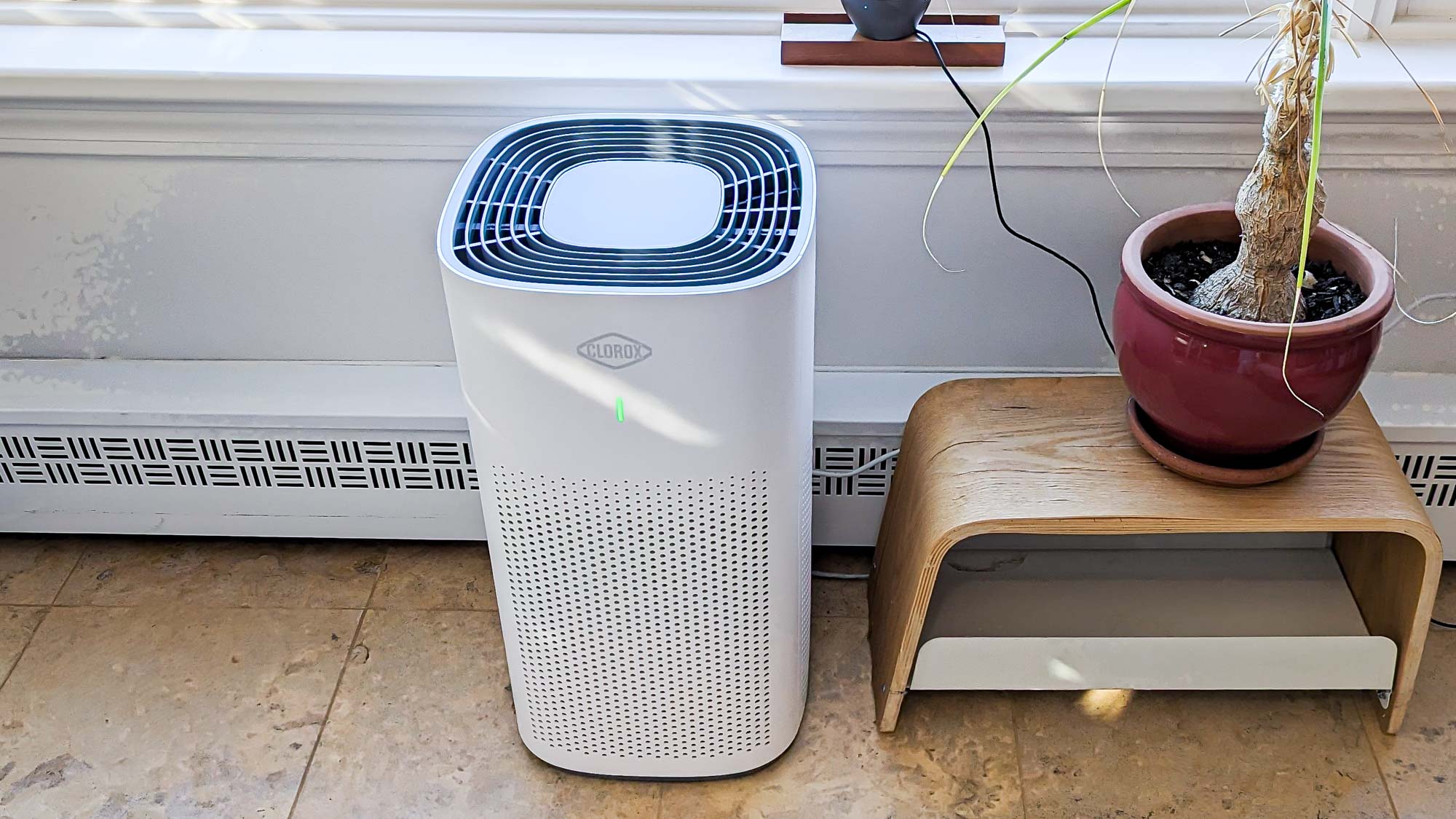
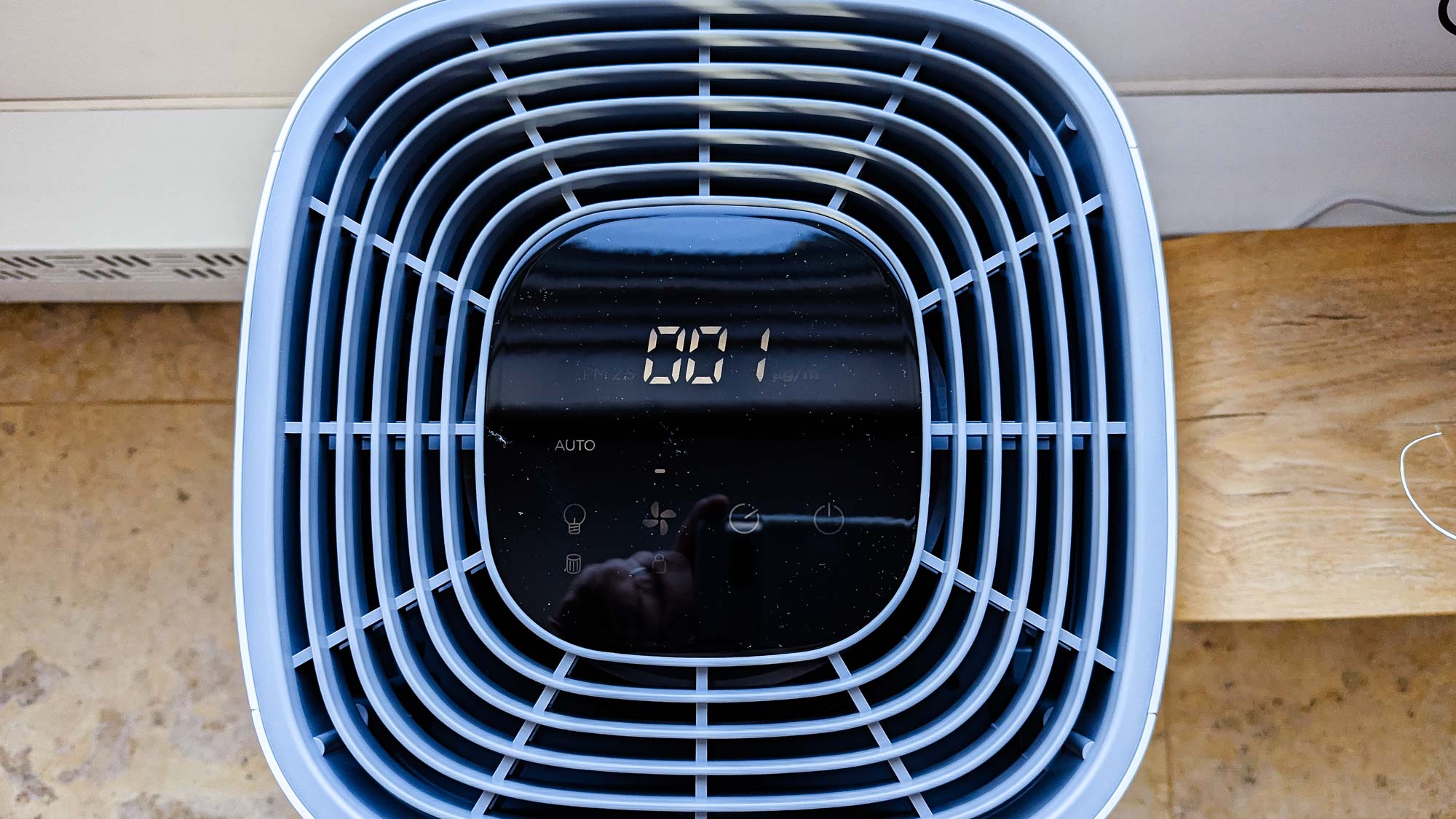
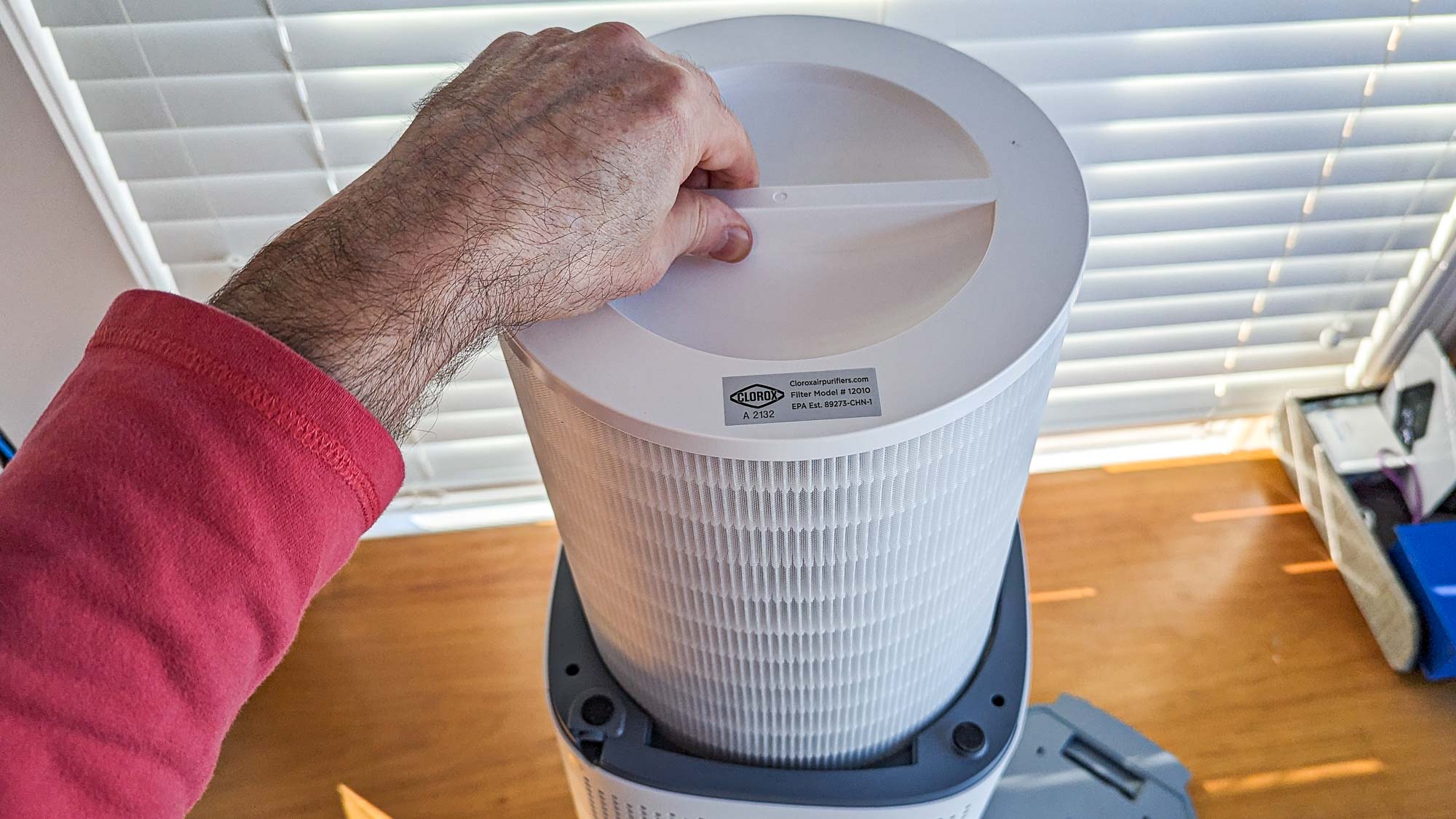
Specifications
Reasons to buy
Reasons to avoid
Attributes | Notes | Rating |
|---|---|---|
Price | Good value up front | ★★★★☆ |
Design | Plenty of settings | ★★★★☆ |
Performance | Great in small space | ★★★★☆ |
Ease of use | Easy-to-read controls | ★★★★☆ |
What you need to know
Now we all know that quality air purifiers are not cheap, and you might not want to splurge. However, if you're on a tight budget, but need a powerful unit, the Clorox Large Room True HEPA Air Purifier came up tops as a great, affordable option. We also liked the Clorox's small and neat design, that has a small footprint.
And there's no better way to test an air purifier than after a renovation. Our tester, Brian, was impressed at how quickly the Clorox cut the dust levels significantly during his kitchen rebuild, and in his medium-sized, home office. In fact, he mentions in his review that he didn’t need to dust the room as often, which is always a bonus!
Despite its small price, it still comes with plenty of functions that make it easy to use. This includes clear indicators for fan settings, automatic operation, and an LED color bar to show the current particulate level.
With a touchscreen to control everything, ease of use couldn’t be more obvious. Although, the only thing we felt was really missing is a remote control and App, which would have been handy. But if this is something on your wishlist, I'd recommend the Mila air purifier that comes with a fantastic App.
Another thing to consider about the Clorax is that while it's a budget price, the filters cost $49 each time, so replacing them could add up over time. Still, the Clorox is an excellent pick for under $150.
Read the full Clorox Large Room True HEPA Air Purifier review.
Buy it if
✅ You want a compact design: This air purifier features a compact design which is ideal for smaller spaces. Measuring 19 x 10 x 10 inches and weighing 11.6 pounds, it’s portable and easy to store as well.
✅ You want value for money: Priced at $149, this air purifier offers excellent value for money. And, it's very energy-efficient. However, replacement filters are a somewhat pricey $49.
Don't buy it if:
❌ You need something to suit a large room: Despite its name, this air purifier works best in rooms up to 320 sq. ft., so it’s likely unsuitable for larger bedrooms or living rooms.
❌ You want to control it remotely: To cut some corners, this model does not come with a remote control or smart home connectivity, but Clorox offers higher-priced models with these features.
The bottom line
The Clorox Large Room True HEPA Air Purifier is the answer if you need an air purifier at an affordable price. It’s more than capable of adequately cleaning medium-largish rooms. Plus it offers all of the settings you need, including an auto function.
Best for large living rooms
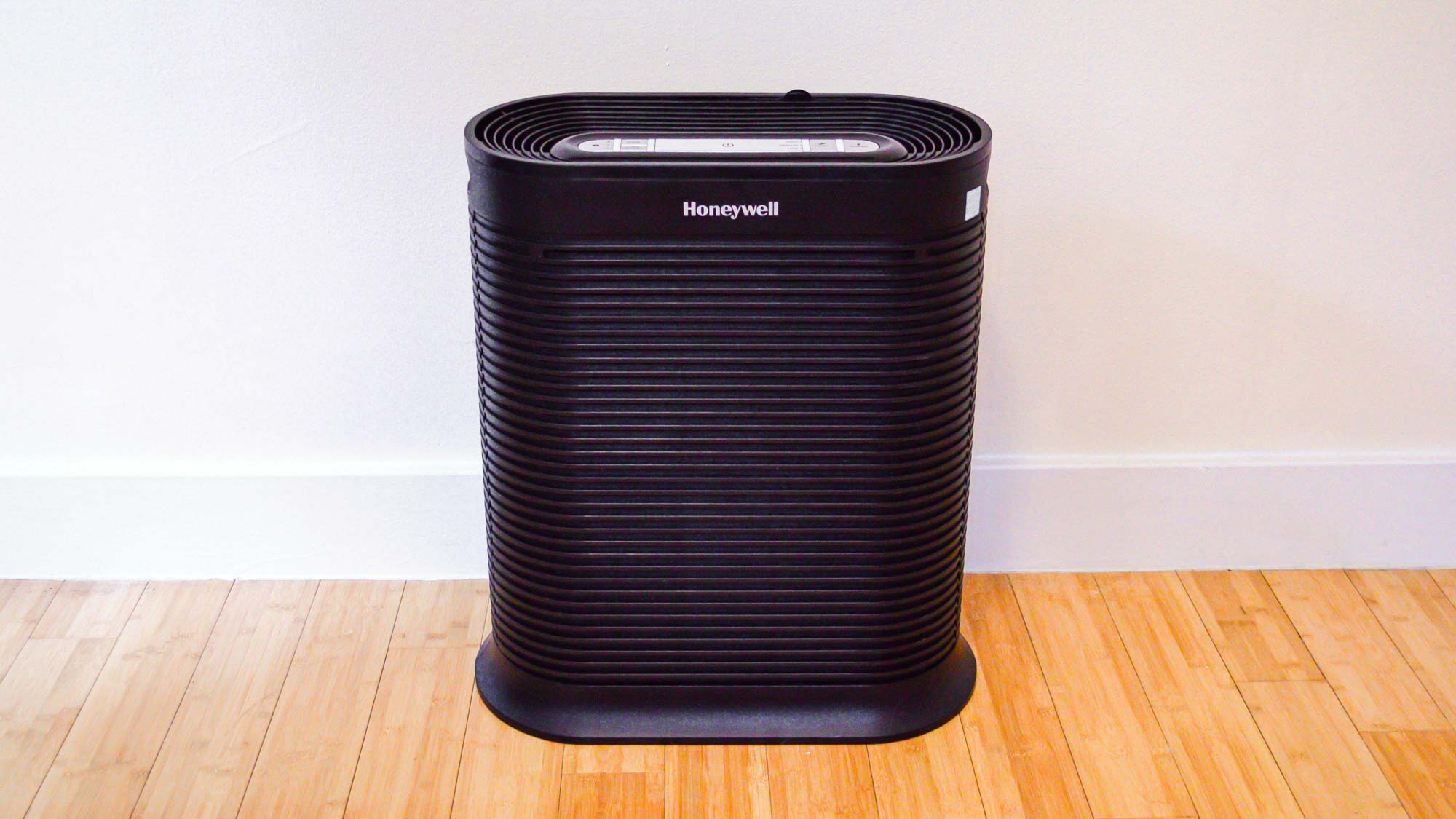
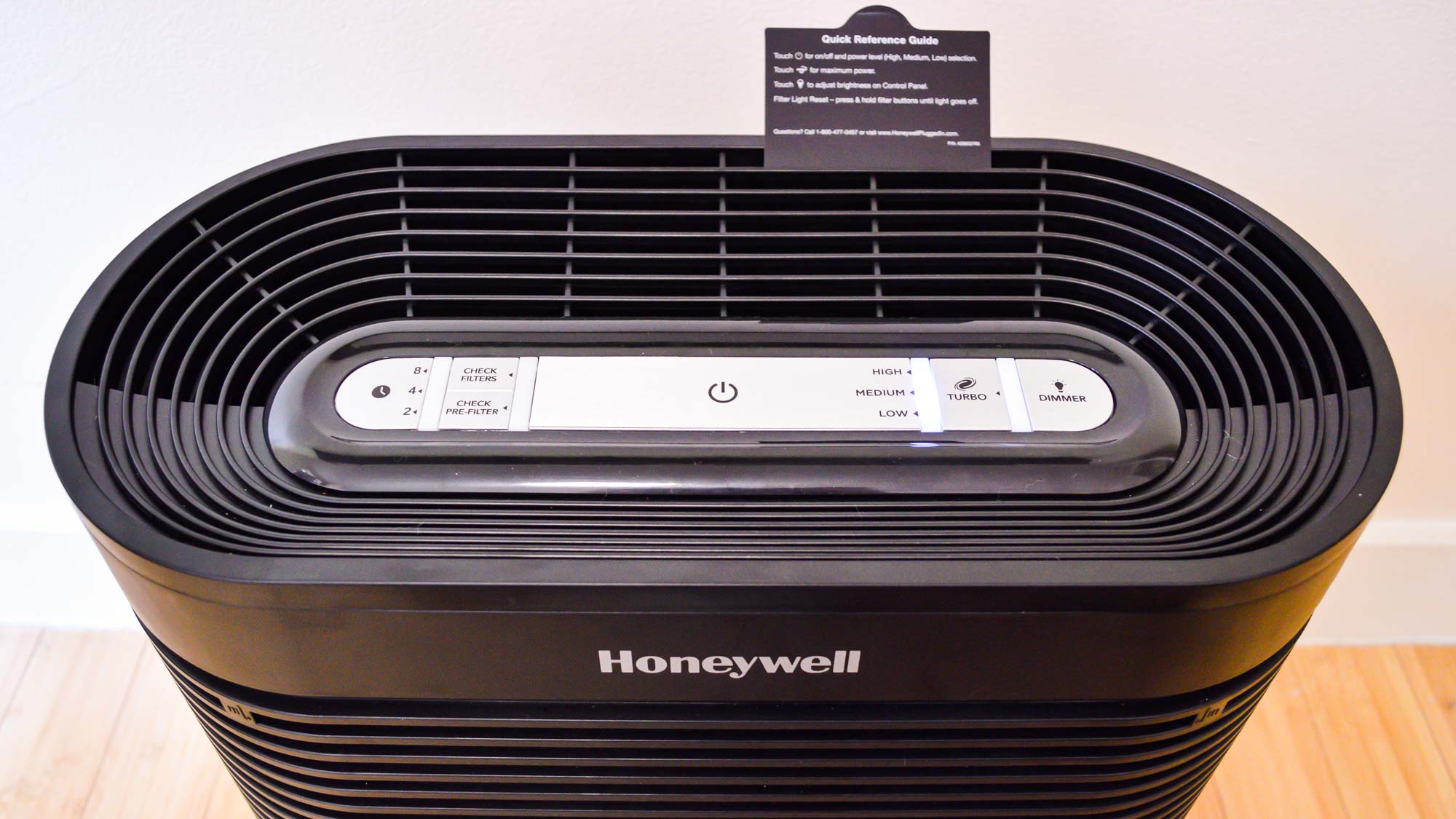
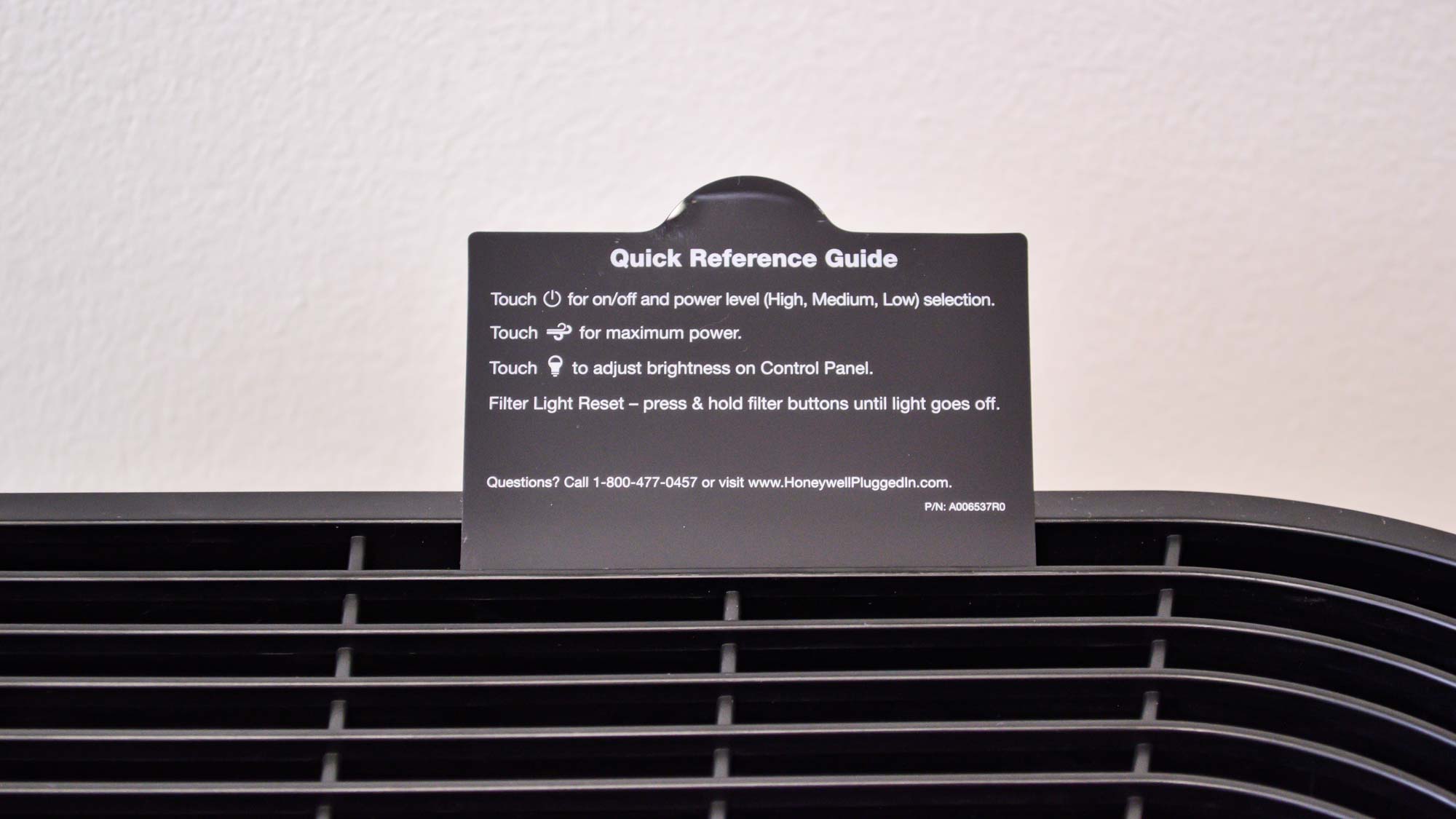
Specifications
Reasons to buy
Reasons to avoid
Attributes | Notes | Rating |
|---|---|---|
Price | Great price but high energy use | ★★★★☆ |
Design | Adequate but no auto mode | ★★★☆☆ |
Performance | Strong but poor energy ratings | ★★★★☆ |
Ease of use | Intuitive | ★★★★☆ |
What you need to know
Do you have a large living room, kitchen or family space that is often dust-ridden or full of lingering smells? Open-plan living is the norm for many homes, and I know first-hand the perils of trying to get rid of cooking odors or cleaning sprays.
Although not the most stylish, the Honeywell HPA300 is a robust air purifier that gave a strong performance in our tests. And while it scored slightly better on dust, it did well to filter smoke, odors and pollen in a large space.
Don't expect fancy mod-cons though, as it only comes with four different fan speeds (including a turbo mode), as well as a timer for up to eight hours. We were also disappointed that there is no auto mode, meaning you'll have to manually change the fan speeds.
However, the Honeywell was a breeze to use, with the exception of replacing the HEPA filter (that was a little tricky at first). It has a touch-based control panel and a quick reference guide to remind you of the basics. I'd say this would be perfect for non tech-savvies or those new to air purifiers.
It's also reasonably priced, from $150, and has cheap replacement filters, which is always handy for long-term costs. But this does come at a price. In our tests it was was pretty noisy on the loudest setting, which might not bode well if you value your peace and quiet. In which case, you might want to opt for the Blueair HealthProtect 7470i (48dB) that was significantly quieter.
Still, if you want amazing results to tackle large, family rooms, the Honeywell HPA300 won't disappoint.
Read the full review: Honeywell HPA300
Buy it if
✅ You need to cover a large space: This air purifier will suit rooms of up to 465 sq ft, which is pretty sizable.
✅ You want good value for money: Considering its price of $150 and the capacity of 465 sq ft, this air purifier is excellent value for money. Plus the replacement filters only cost around $40.
✅ You want something simple to use: The touch-based control panel on top of this air purifier is very easy and intuitive to operate. Plus there’s a quick reference guide included to help get you started.
Don't buy it if:
❌ You want an auto mode: This air purifier lacks an auto mode, which means it will stick to whatever fan speed you set it to, rather than adjusting based on the quality of the air. That means you could be using more or less power than is actually necessary.
❌ You want to save on energy: The Honeywell HPA300 consumed a lot of energy during my tests — using 1.002 kWh over 24 hours on the standard setting.
❌ You like peace and quiet: This air purifier is quite a noisy operator, producing some of the loudest decibel readings in my tests on both the lowest and highest settings (41 and 59.6dB).
The bottom line
The Honeywell HPA300 might not be the prettiest to look at, but it’s straightforward to operate and will get the job done. Just keep in mind there’s no auto mode, and it’s not ideal in terms of noise or energy consumption.
Best for small spaces
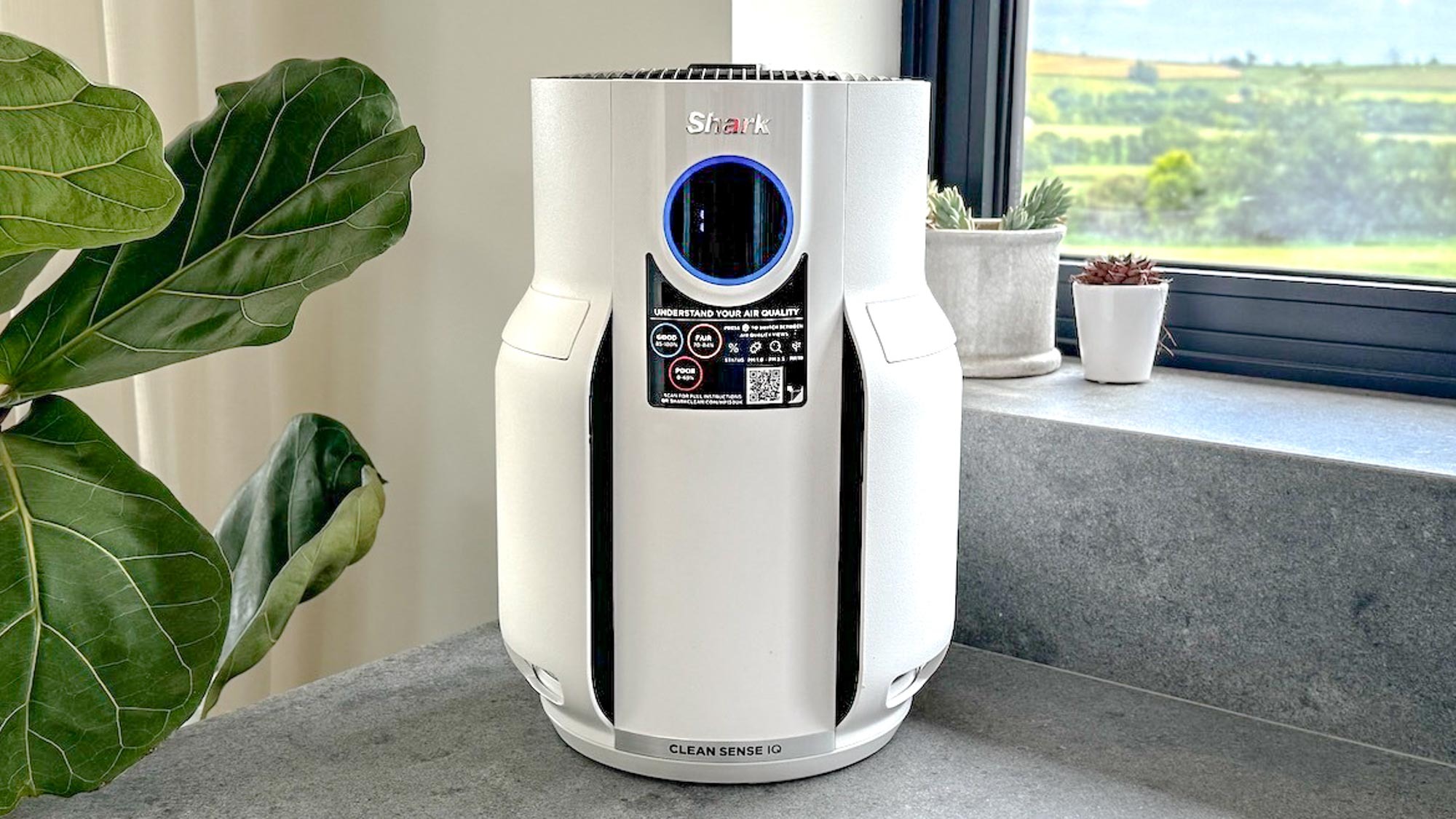
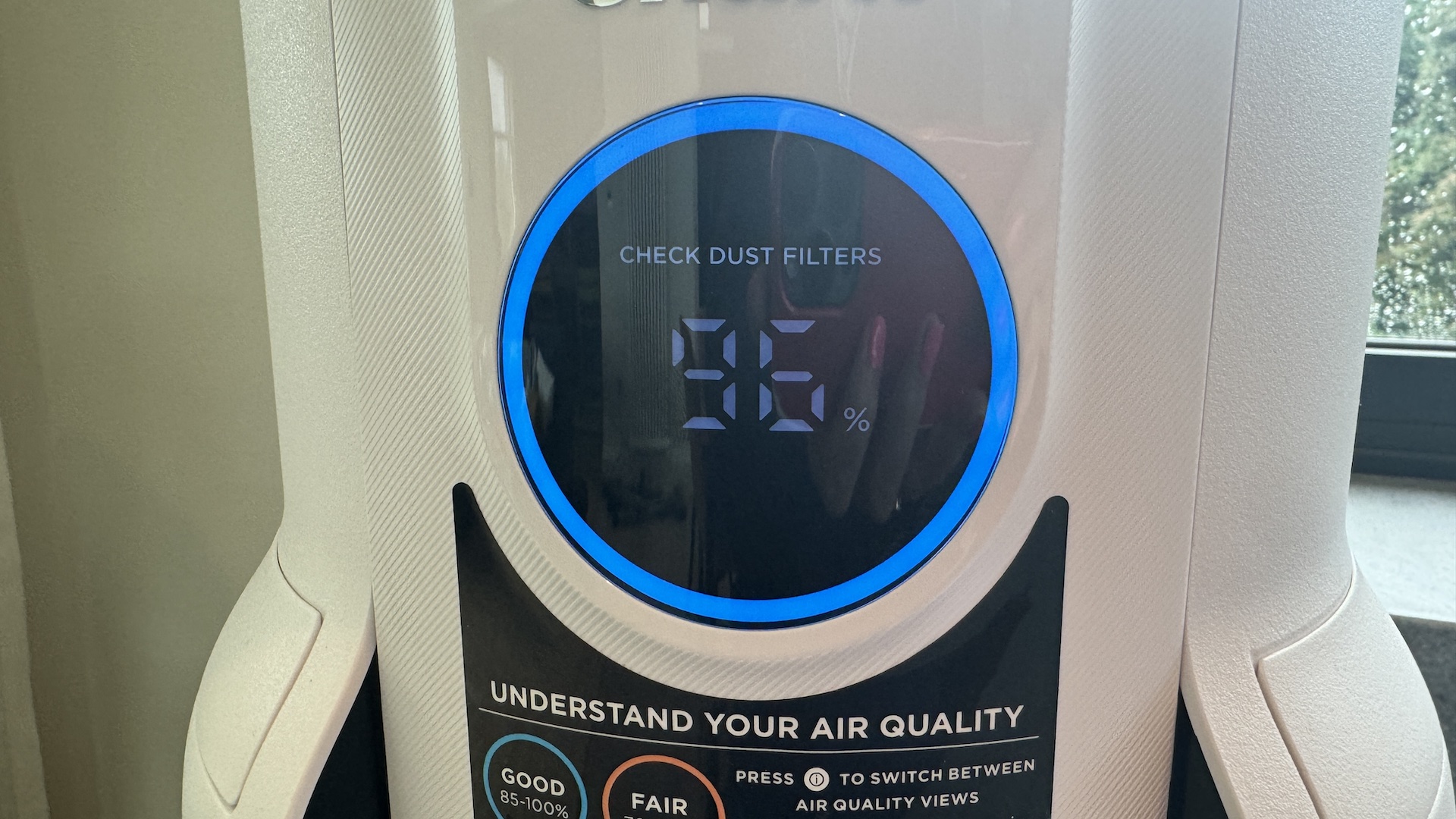
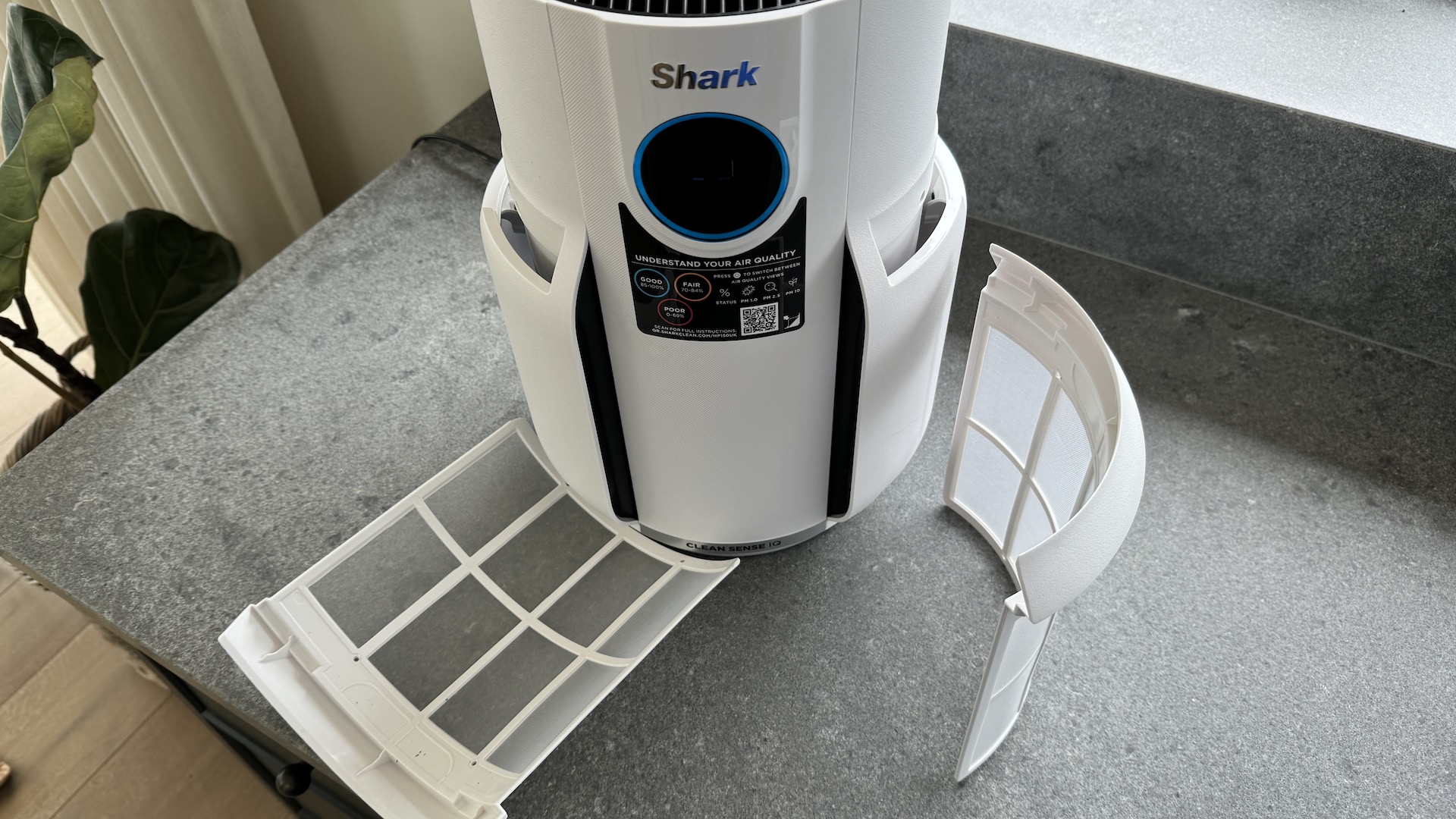
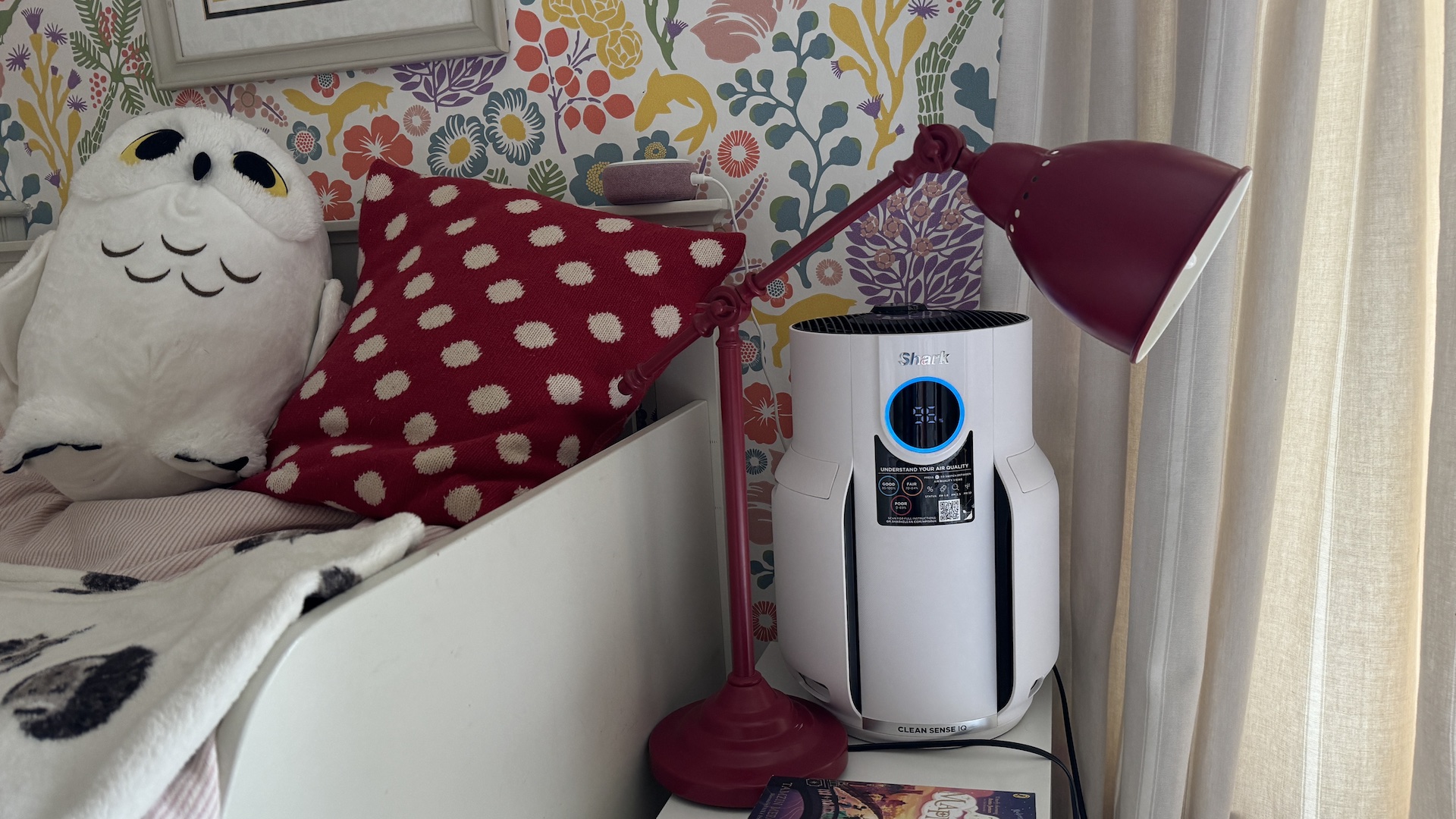
Specifications
Reasons to buy
Reasons to avoid
Attributes | Notes | Rating |
|---|---|---|
Price | Reasonably priced but filters are expensive | ★★★★☆ |
Design | Compact and attractive design | ★★★★☆ |
Performance | Good performer in mid-sized rooms, very intuitive | ★★★★☆ |
Ease of use | Easy set-up and real-time data, however no carry handle | ★★★☆☆ |
What you need to know
Air purifiers can be bulky beasts, and if you live in a small apartment or need it for a tiny space, you'll probably wouldn't want an eyesore in the room.
At first glance though, the Shark NeverChange looks more like a small kitchen appliance than your average air purifier. And if you're space-limited, it's compact design will fit into any snug room or look attractive on a desk or side table.
Despite its small stature (15 inches tall), it boasts some great features that we love. Mainly for its easy-to-use, touch controls, five settings and a stylish, ring light indicator that goes from blue (good air) to red (bad air). We also liked that it comes with an odor neutralised that will leave your home smelling fresh, which is always a bonus.
Perhaps it's main selling point (and as the name suggests) is its five-year filter, which will save you on buying costly replacement filters in the long-term.
We tested this in several small-mid-sized rooms, and impressed by its top performance around the home. It notably ramped up in our tester, Linda's, kitchen/dining area, doing a grand job at filtering cooking odors within just one hour. This high range was also consistent when removing dust and pollen levels in the snug, living room area, and child's bedroom in minimal time.
While we enjoyed its ease of use and performance, there were a few caveats. It's surprisingly heavy (at 7.2 pounds), and doesn't come with a carry handle. Another gripe is that you'll need to purchase a remote control separately, and there is no App. However, if you prefer convenience, you could opt for the Mila air purifier that comes with a great App.
In any case, it was the quietest model that we tested by far on the lowest setting (38 dB(a)) — measuring in line with a ‘quiet rural area’. Personally, I'd favor a quiet air purifier over mod-cons any day.
If you're after a compact size or have a small room like a nursery, the Shark NeverChange air purifier our top pick.
Read the full review: Shark NeverChange air purifier.
Buy it if
✅ You want a compact yet powerful air purifier to cover mid-large rooms. It also exceeded the recommended 650sq ft max per room during our tests.
✅ You want a long lasting filter. It comes with a NeverChange filter that lasts for 5 years, based on 12 hours use (on max power), per day.
✅ You want intuitive features, settings and easy-to-understand, real-time readings. It comes with a LED ring light that changes from Blue (good air quality) to Red (poor air quality).
Don't buy it if
❌ You have a lot of stairs or need to carry it around often. It is fairly heavy, and lacks a carry handle.
❌ The remote control is available at an extra cost, so bear that in mind.
The bottom line
The Shark NeverChange air purifier may not have all the mod-cons, but it gave impressive results with the air quality, offers useful data, and is relatively quiet. It's ideal if you don't have much floor space, or if you want something that looks aesthetically appealing.
What's more, you won't need to worry about replacing the main filter anytime soon, with its promise of five years. Which makes it value for money in the long-term.
Best for allergies
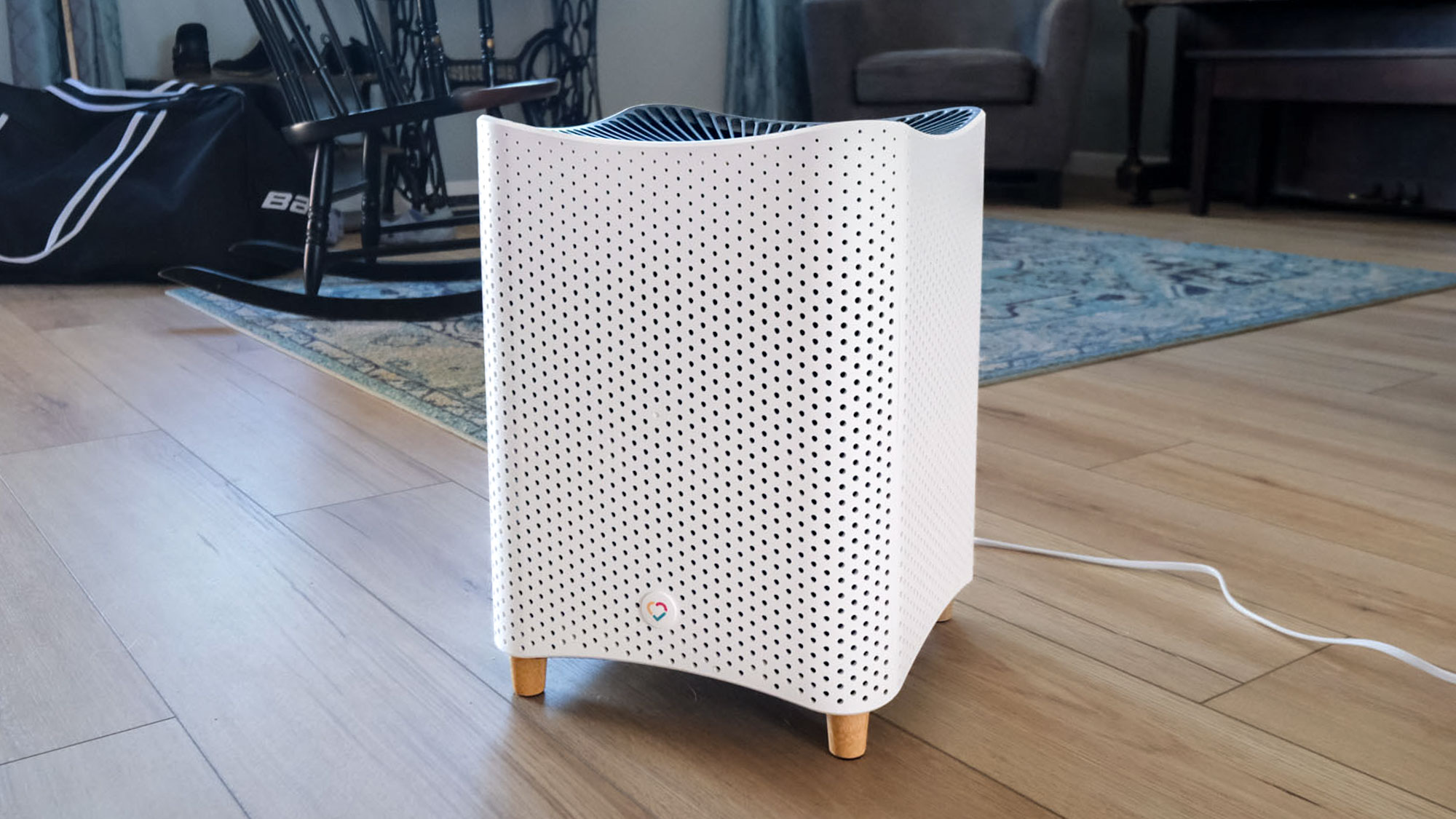
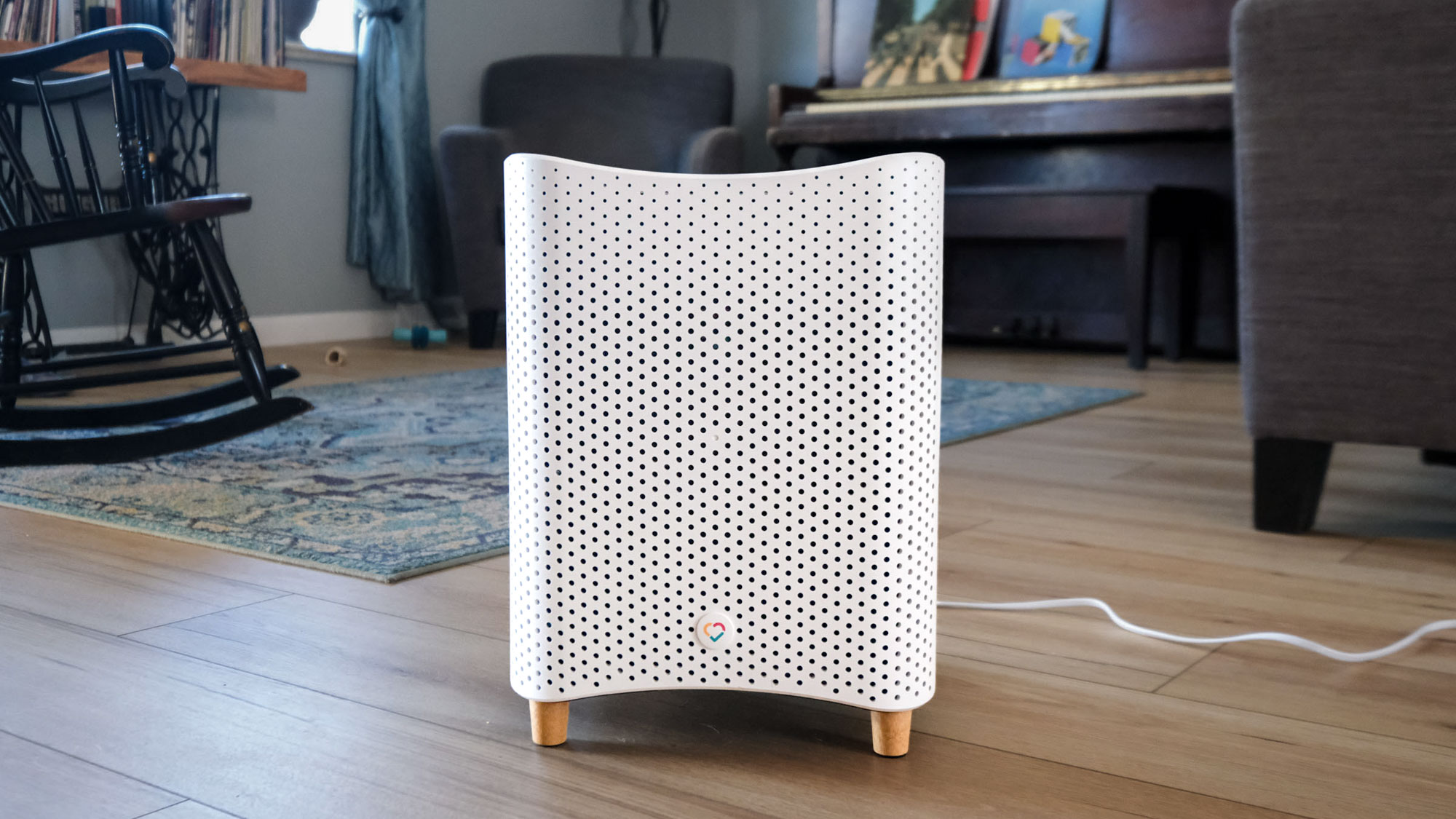
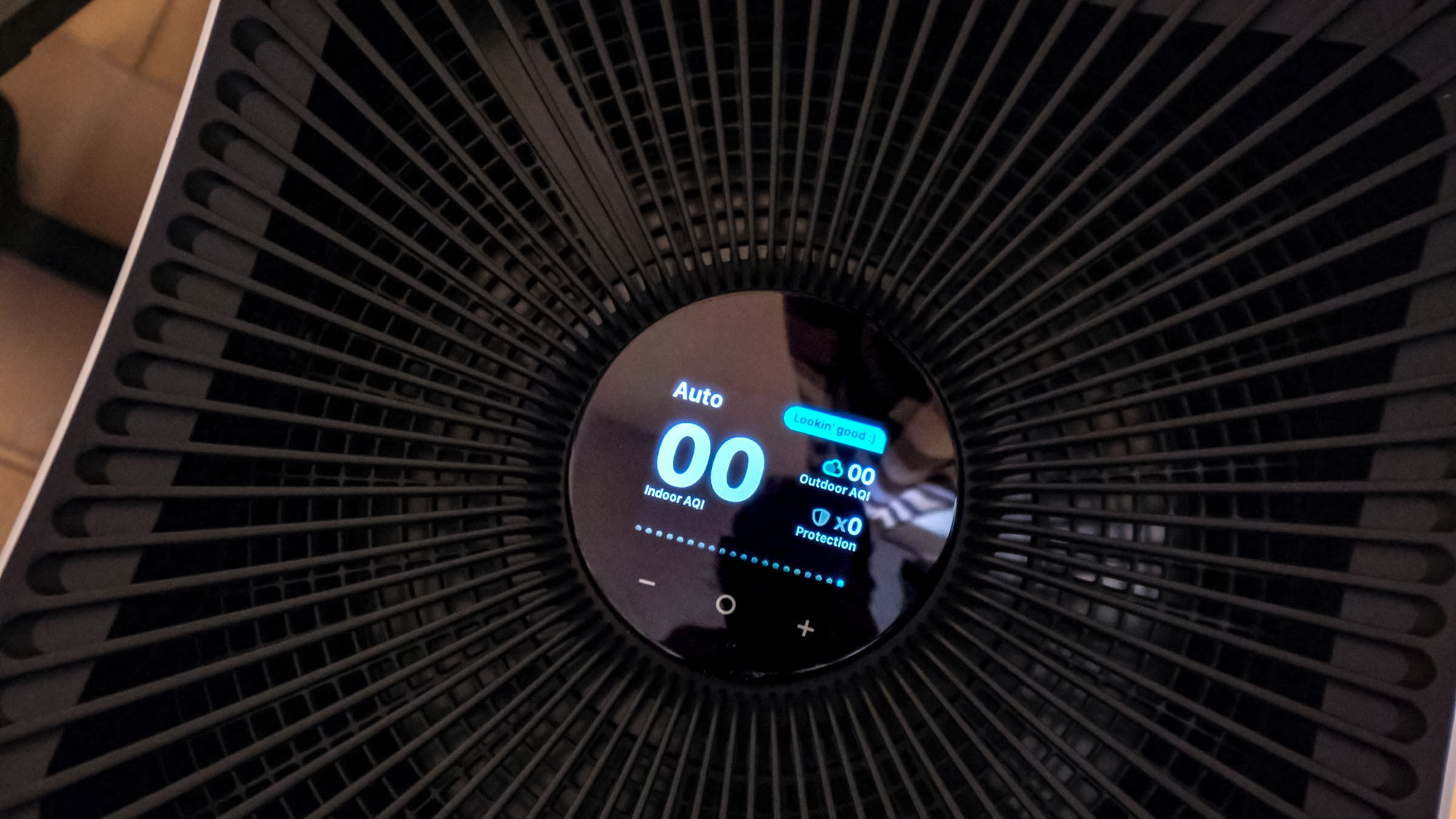
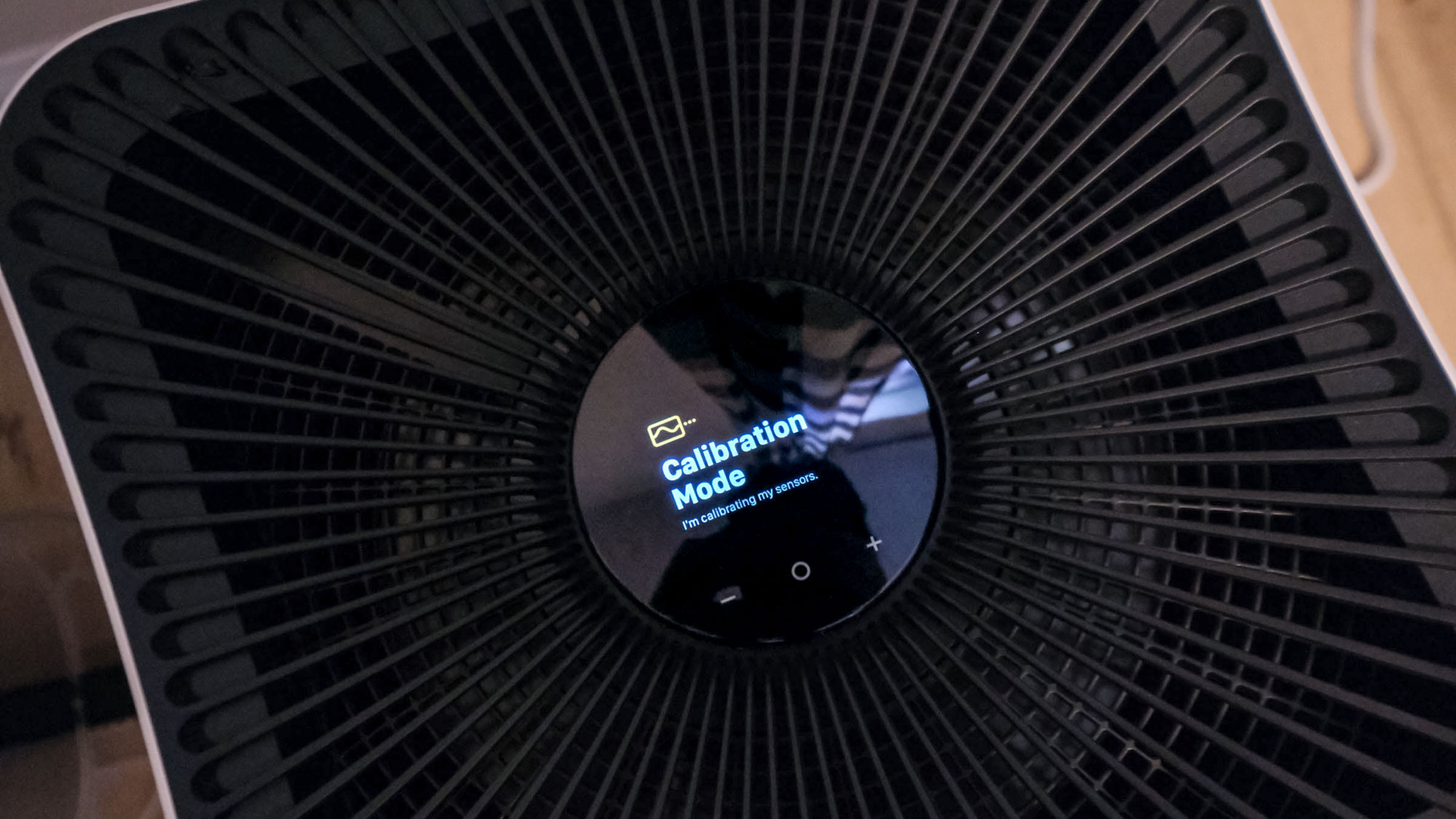
Specifications
Reasons to buy
Reasons to avoid
Price | Slightly more expensive but offers range of packages | ★★★☆☆ |
Design | Compact and attractive design | ★★★★☆ |
Performance | Good performer in mid-sized rooms | ★★★★☆ |
Ease of use | Easy to set up with very good app | ★★★★☆ |
| Row 4 - Cell 0 | Row 4 - Cell 1 | Row 4 - Cell 2 |
What you need to know
As someone who suffers from hayfever, the Mila Air Purifier was my personal favorite, and our top pick for allergies. This is thanks to Mila's seven interchangeable filters that you can easily swap out to suit your specific 'breathing' needs — and with quirky names too! For instance, The Rookie Parent, for little ones or The Basic Breather - for daily needs. Making it ideal for all members of the family.
Design-wise, the Mila is certainly eye catching, and its curvy, modern style can fit into any decor style. We found it super easy to set up, and it has a handy LCD display, remote control and a very good App. Other great features include a room presence sensor that detects when a human is in the room and adjusts it's noise accordingly. Pretty impressive if you don't want to be disturbed.
Despite its small appearance, the Mila Air Purifier, made quick work of removing various airborne particles in our medium-sized living areas. Although, in larger rooms, that run time gets extended.
The only criticism is that it can be too noisy on a high setting - but this was only when the air was bad. However, if you did want a quieter purifier, or you don't want to disturb anybody's slumber, you can opt for the quieter Blueair HealthProtect 7470i.
Essentially, the Mila is a great choice for families, allergy sufferers or anyone who simply wants a good-looking air purifier in their home.
Read the full review: Mila air purifier.
Buy it if
✅ You want a powerful yet stylish air purifier that looks great in any room, without being an eyesore.
✅ You want a user-friendly App that communicates important information in easily digestible messages and data delivery charts.
✅ You want fast operation and a variety of seven filters to choose from, depending on your specific requirements. These offer different levels of filtration for various types of airborne particles.
Don't buy it if
❌ You want a super quiet operation when the machine is on high.
❌ You're looking for affordability, the different filters can be expensive in the long-run
The bottom line
The Mila Air Purifier is a powerful, fast performer and ideal if you don't have much floor space. Those with allergies will benefit from the exchangeable filters to tailor your needs, and it has one of the best App control we've tested. If you care about aesthetics, its stylish design can suit any room.
Also tested
While we put plenty of air purifiers through extensive testing, not every model made the final cut, despite doing a decent job.
However, if you're still looking for an alternative to suit your needs or budget, check out the air purifiers below.
If you're after a powerful, smart purifier, this Blueair came tops in all our tests. Simply use with remote control via an app, and there's a useful LCD screen built into the device itself. In fact, the only letdown is it's incredibly heavy weight, even with wheels. A good contender otherwise.
Read the full review: Blueair HealthProtect 7470i
Dyson Purifier Hot+Cool™ HP07 Air Purifier
The Dyson Purifier HP07 Air Purifier was dethroned by the Blueair Blue Pure 211+ Auto as the best overall, but it's still got a lot of great features. Not only does it cool down the room, but offers top notch heating and state of the art design. It also comes with App control and real-time reports. As with most Dyson products, it comes at a hefty price, however, if you want a high-spec purifier, and unique style, this is a good buy.
Read the full Dyson Purifier Hot + Cool HP07 review.
Dreo Air Purifier Tower Fan MC710S
The Dreo Air Purifier Tower Fan seemed promising, but fell short due to its lack of charcoal filtration to remove odors and its very low CADR rate. However, the features that we did rate it for included its huge air flow, vertical design and handy, app control.
Read the full Dreo Air Purifier Tower Fan MC710S review.
.
This air purifier stands out for featuring “Plasmawave” technology to tackle any unwelcome airborne particles. It also comes with a useful remote control. However, it fell short in our tests for loud noise levels when running on high, and expensive filters.
Read the full Winnix 5500-2 review.
Small and compact in stature, this air purifier comes with a useful eco setting which will keep energy costs low. Despite it's energy efficiency, it fell short due to its loud noise levels and hefty weight.
Read the full review: Coway Airmega AP-1512HH
How we tested the best air purifiers
In-home testing
We first put our air purifiers to the home test to compare the design and ease of use of each in a real world environment. For instance, how well can it cope with smoke, dust, pet dander and lingering cooking odors.
To figure out the noise output, we used a decibel meter and ran the purifiers at a set distance of three feet away on both the lowest and highest possible fan settings. And for energy usage, we hooked up each device to an electricity usage monitor and ran it for a full 24 hours. We also took an ambient room reading to make sure that the fan noise was not being overpowered by outside noise.
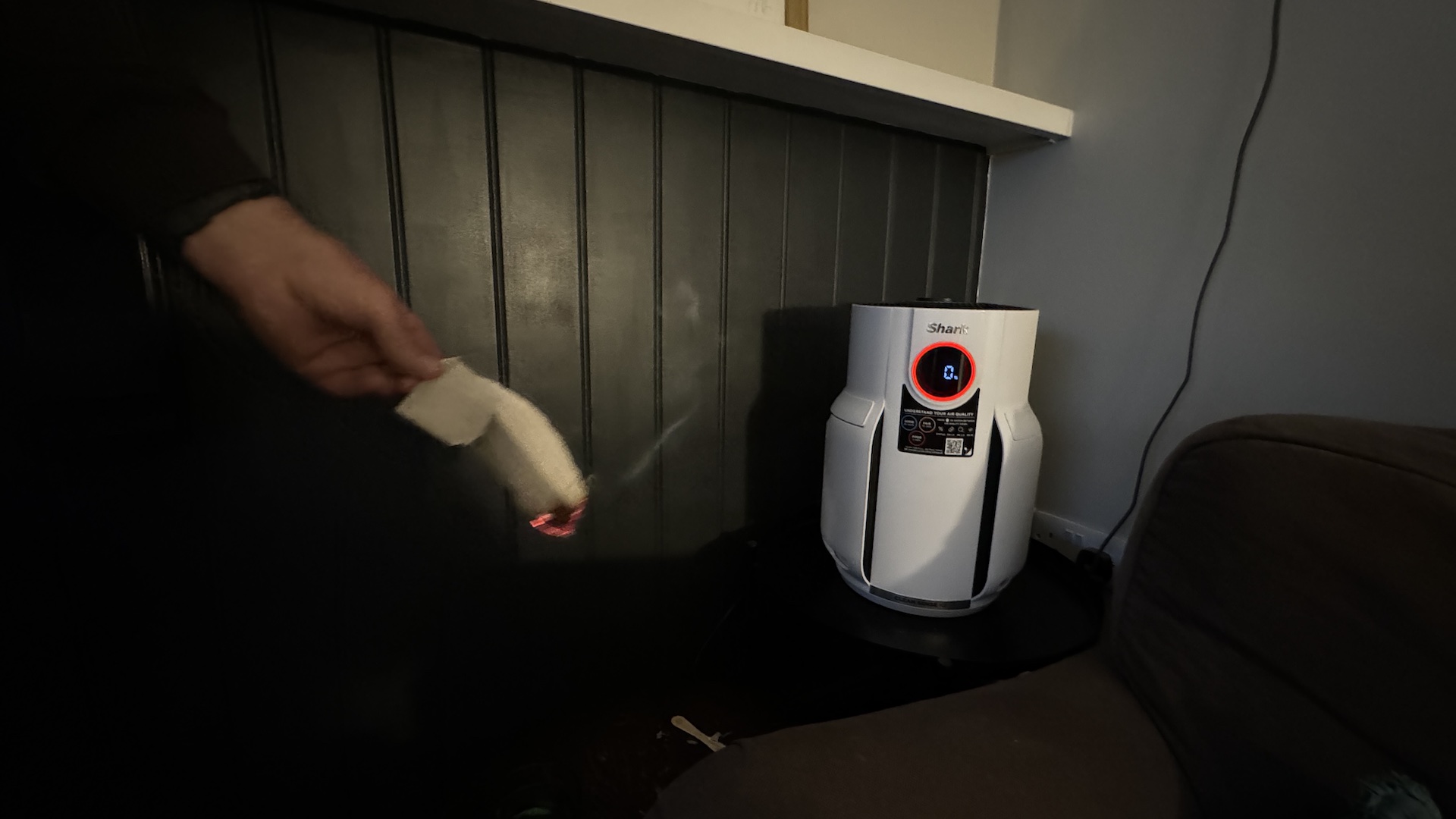
Other factors we considered included overall set up, cord length and whether the model oscillates. With all of this, we were able to create a scoring system to summarize the overall experience.
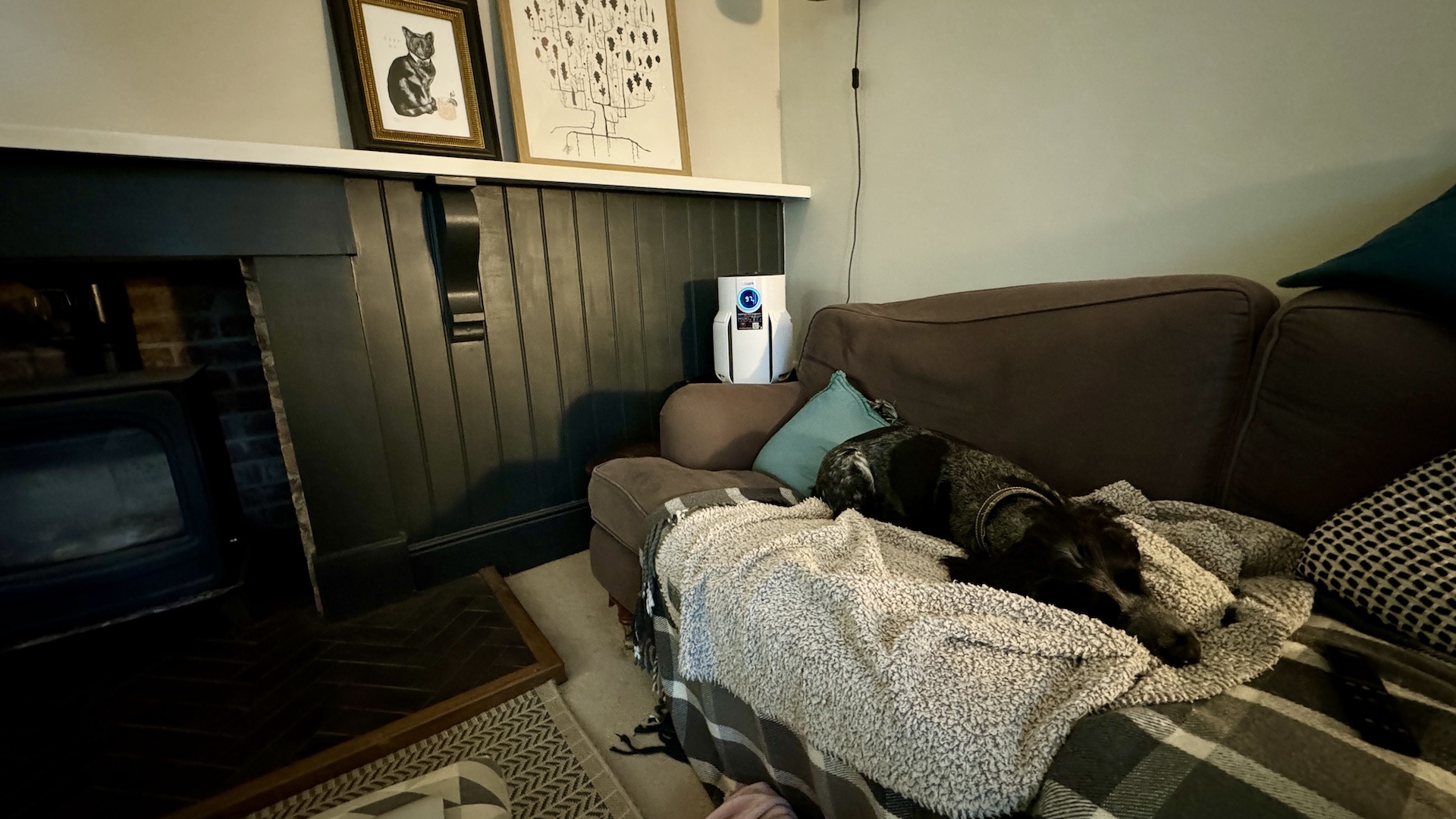
Laboratory testing
If a CADR rating was not supplied by the manufacturer, we sent it off to a lab to get our own rating .
We used SGS IBR Laboratories to calculate the CADR for each pollutant by sealing the air purifier into a test chamber and then immersing with tobacco smoke, dust or pollen at a controlled rate. Each particle test would be conducted two times — once with the air purifier switched on and once where it’s powered off.
In the real world, the standard goal is to clean a full room’s worth of air in 15 minutes. So, for instance, a 300-square-foot room would need an air purifier with a CADR of 200 or so, assuming ceilings were 10 feet. That's why it's so important to get the right purifier for your room size if you want to see (or smell) the best results.
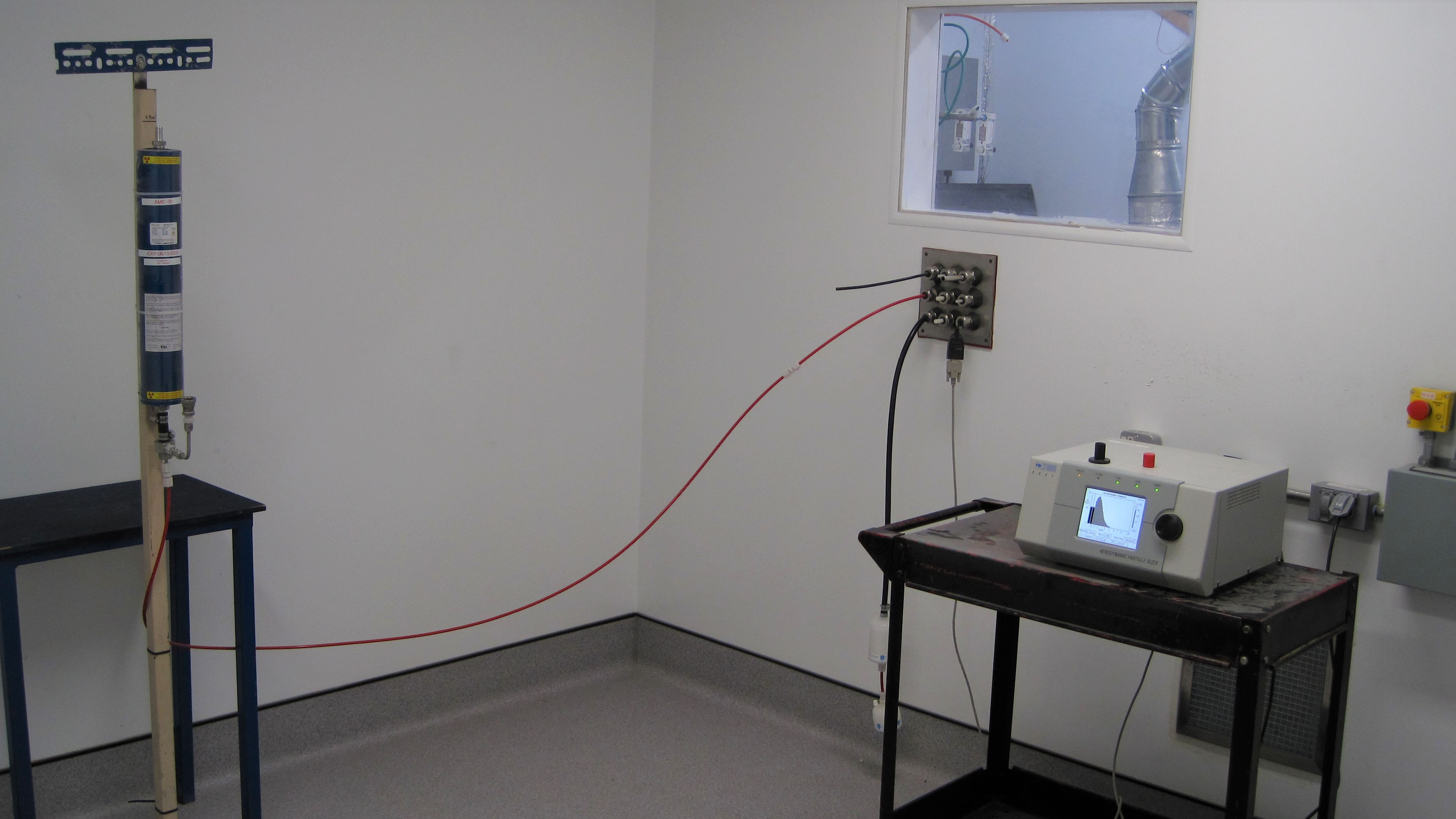

"What makes a good air purifier in my opinion is striking the balance between utilising a filter (or series of filters / filtration mechanisms) that have good removal efficiency for contaminants in the air that we breathe, whilst allowing for high airflow through the air purifier."
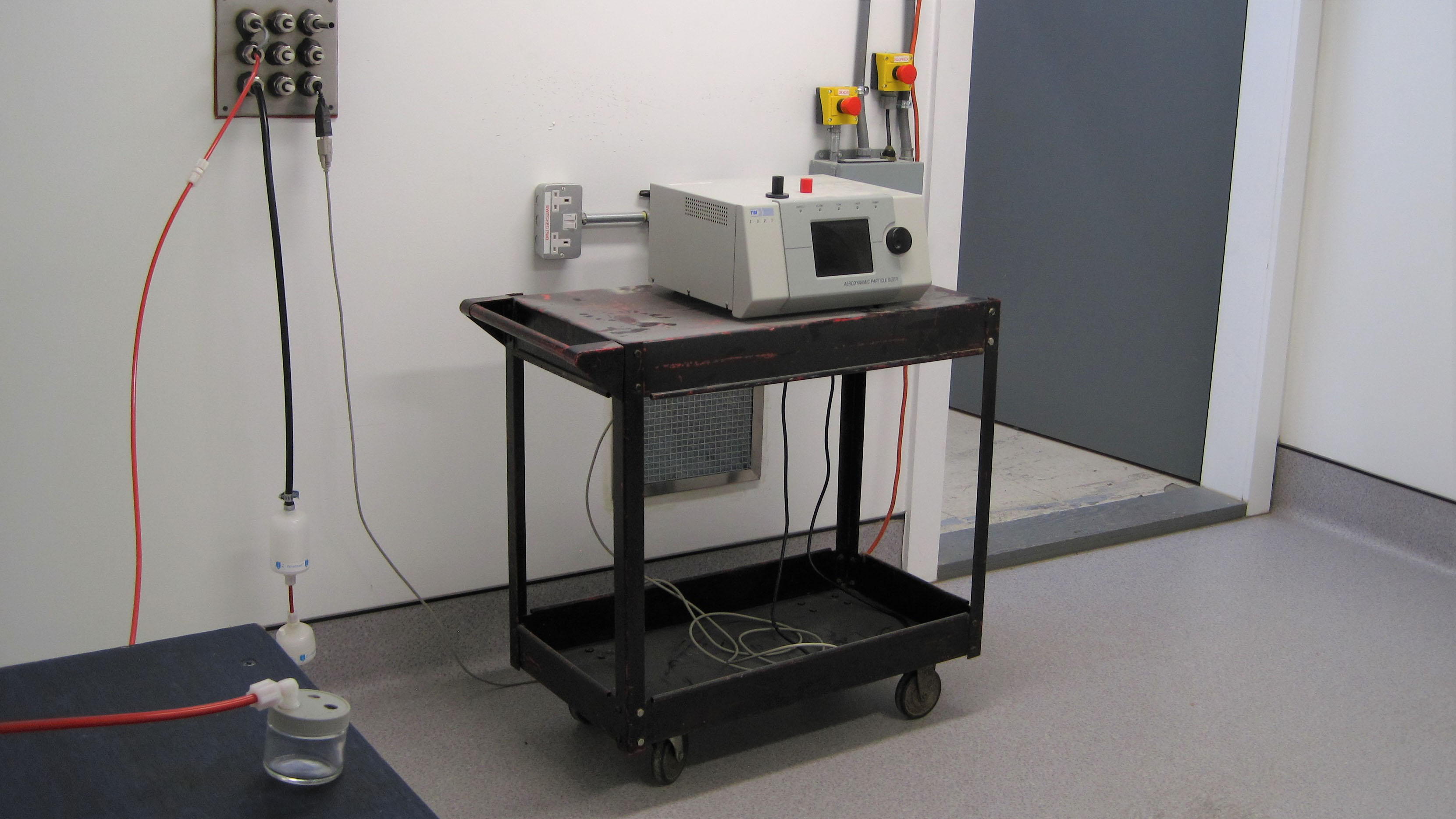
Meet our testers
Introducing you to our trusted team who have spent countless hours testing the best air purifiers in their homes, so you don't have to!

Dan Cavallari is our freelance reviewer who tests large home appliances, outdoor grills, electric bikes, and more. He currently spends countless hours testing air purifiers and dehumidifiers (in his damp basement), and is our go-to, "clean air" expert.

Linda Clayton is our roving product tester and kitchen tech specialist. She spends most of her time reviewing the latest gadgets, from air purifiers to coffee machines and more. Fun fact: she runs a large household, with a few dogs and ponies, so puts her air purifiers to good use!

Steven is a writer, editor and has made it his mission to find the best air purifiers out there. In fact, his home has since become an air purifier haven, having stored and tested well over 10 models at one time, for three months.

Brian is a freelance writer and editor who specializes in technology reporting and reviewing. He spends his time reviewing air purifiers, dehumidifiers, and space heaters, making him our trusted "air care" expert.
Frequently asked questions
How can I keep my air clean?
If you suffer from allergies, or don't have access to an air purifier, there are other things you can do to reduce dust in your home. Things such as dusting regularly, or vacuuming with one of the best vacuum cleaners can help.
It's also recommended to wash your bedding every two weeks, remove footwear at the front door to prevent you from bringing dust around the home and invest in a 'waterhog' mat to catch dust.
If you want to know the quality of your air, it's always worth investing in a smart air quality monitor. Such monitors gives you detailed reports about a room's air quality as well as trigger automations, based on a 100-point scale.
Can you use an air purifier with the windows open?
Air purifiers work most effectively when the windows are closed. By closing the windows, outside pollutants are kept out and won’t affect the effectiveness of the air purifier — helping to extend the life of the HEPA filter.
If you need to ventilate your room, Smart Air recommends opening your windows for 15-20 minutes to allow the air in the room to be refreshed. Once the doors and windows are closed the air quality will quickly return to the safe range when the purifier is in use. If you’re concerned about the quality of your air, you can purchase an air quality monitor to measure your indoor PM2.5 levels.
Will an air purifier remove odors?
An air purifier will clean the air and remove odors, unlike candles and scents that mask the smell. The best air purifiers to remove smells use activated carbon filters to eliminate substances that include gases, chemical toxins and odors.
Other types of filters, such as HEPA filters, are less effective in removing odors than they are in eliminating pollution particles.
Will an air purifier remove dust?
Similarly, an air purifier can help to remove active dust particles in the air, thus, reducing the amount of dust in your living space. This is because air purifiers are designed to capture and trap dust particles via its filter.
High-Efficiency Particulate Air (HEPA) filters are widely known for their effectiveness in capturing small particles. According to experts, such filters are capable of removing up to 99.97% of particles as small as 0.3 microns in size.
How do I know what filers to buy?
Filter types can be confusing, but in general, you'll want to look for a purifier that uses a true high-efficiency particulate air (HEPA) filter. Experts recommend True HEPA filters as the standard for air purification. These filters trap 99.97% of particles that are at least 0.3 microns in size.
Some devices have HEPA-type filters, which work similarly but aren't held to the same performance standards. The IQAir HealthPro Plus uses a HyperHEPA filter, which is believed to capture even smaller particles than a True HEPA filter.
In terms of the filter replacement, some models are fitted with filters which can last for years, but can be very expensive to replace. Whereas others can be cheaper, but a replacement is needed much more often.
Sign up to get the BEST of Tom's Guide direct to your inbox.
Get instant access to breaking news, the hottest reviews, great deals and helpful tips.

As the Homes Content Editor, Cynthia Lawrence covers all things homes, interior decorating, and garden-related. She has a wealth of editorial experience testing the latest, ‘must-have’ home appliances, writing buying guides and the handy ‘how to’ features.
Her work has been published in various titles including, T3, Top Ten Reviews, Ideal Home, Real Homes, Livingetc. and House Beautiful, amongst many.
With a rather unhealthy obsession for all things homes and interiors, she also has an interior design blog for style inspiration and savvy storage solutions (get rid of that clutter!). When she’s not testing cool products, she’ll be searching online for more decor ideas to spruce up her family home or looking for a great bargain!
